30 Endemic Animals of Mexico and Their Characteristics


Written and verified by the biologist Georgelin Espinoza Medina
Mexico is one of the megadiverse countries in the world, which means that it has a great wealth of living beings. This is thanks to its privileged geographic location and the diversity of ecosystems and landscapes it presents. In addition, it has a high percentage of endemic species, that is, fauna that’s only found in this territory. Do you want to know more about the endemic animals of Mexico?
These species can be terrestrial or aquatic, some with quite limited habitats. In fact, we can mention examples in almost all taxonomic groups. In particular, mammals, reptiles, marine invertebrates, insects, fish, amphibians, and birds stand out. Below, we’ll present 30 of the animals that are exclusive to this country.
Endemic invertebrates of Mexico
We’ll begin the list with a less studied group but with a large number of endemic species. In addition, they’re just as important as the rest of the living beings, as they contribute great benefits to the ecosystem. We’re talking about invertebrates, represented by a diversity of insects, crustaceans, corals, and even sponges. Let’s see some examples along with their characteristics!
1. The brachyuran crab (Pseudothelphusa dugesi)

This is a small-sized species, because it measures about 2 inches. It’s also brownish in color and is in danger of extinction, according to Mexican regulations.
The International Union for Conservation of Nature (IUCN) explains that it has insufficient data to catalog this species. Likewise, it’s only known in one locality in Mexico, in the state of Durango.
Its greatest threats are the destruction of its home, due to urban development and the pollution of streams.
2. The esperanza swallowtail or Oaxacan swallowtail (Papilio esperanza)
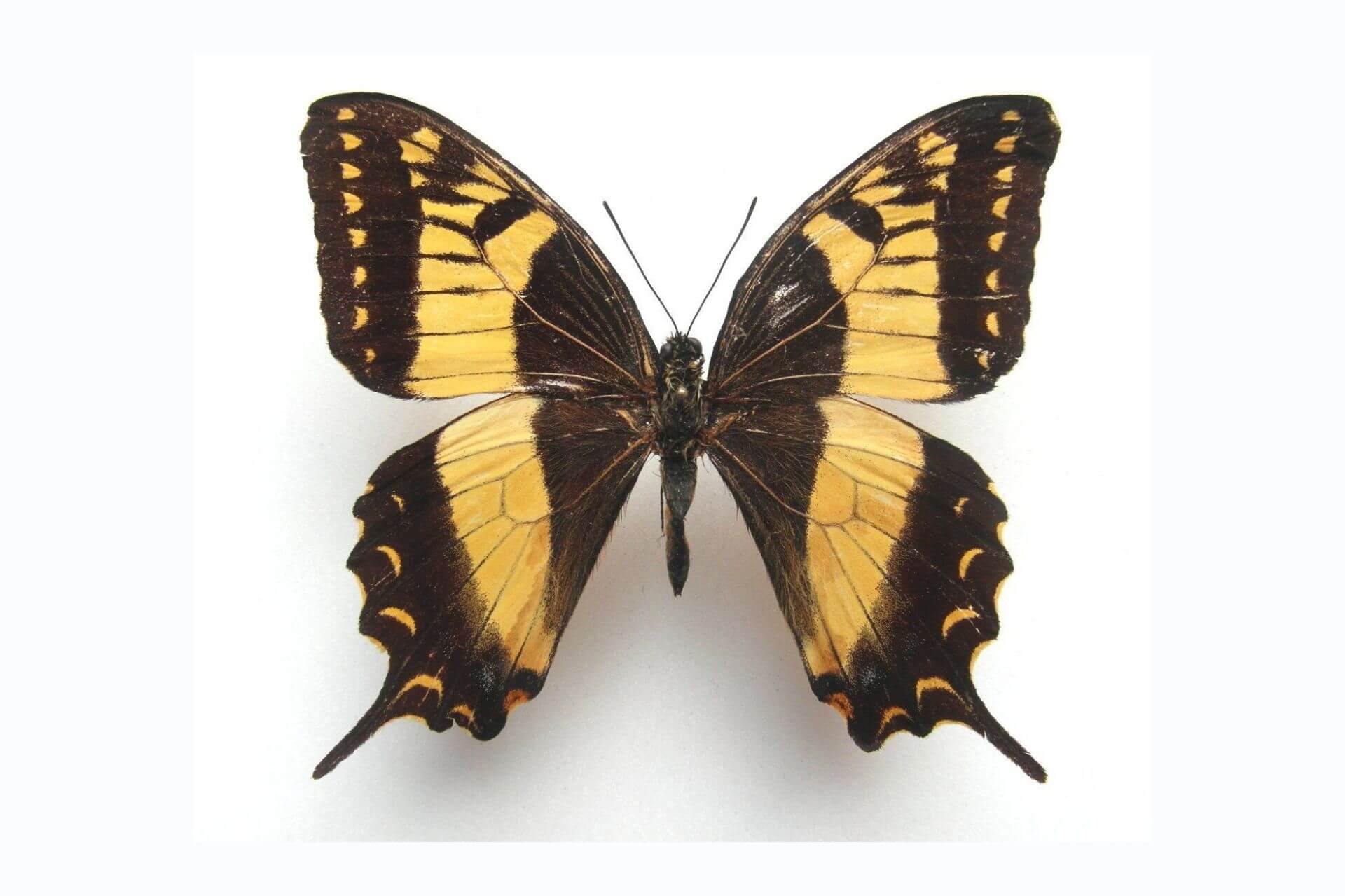
The esperanza swallowtail, also known as the Oaxacan swallowtail. It’s endemic to Mexico, with a distribution restricted to the cloud forests of the Sierra Norte of the state of Oaxaca, between 5250 and 8200 feet above sea level.
This butterfly species is on the IUCN Red List in the “endangered” category due to its very limited location. In addition, its population is estimated to be very small, with a maximum size of 335 individuals and about 112 sexually mature individuals.
3. The Morelos scorpion (Centruroides limpidus)
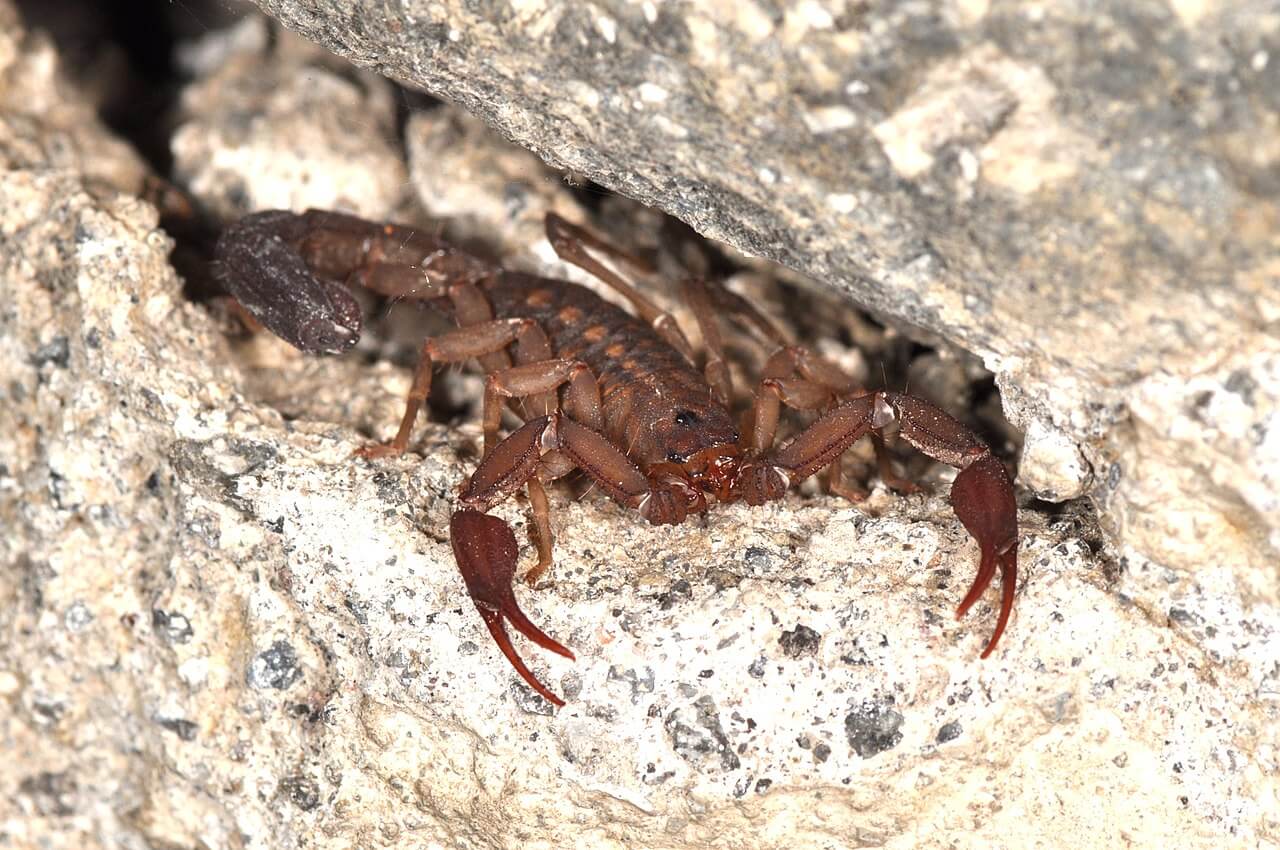
Mexico records numerous scorpion stings, and one of the culprits is the Morelos scorpion. In fact, it’s the third most venomous scorpion in the country, which is located in the following states:
- Puebla
- Mexico
- Morelos
- Guerrero
- Veracruz
- Querétaro
- Michoacán
It has a total length of 1.85 to 2.17 inches. It’s light yellow in color but with brown spots.
4. The Mexican scorpion (Vaejovis mexicanus)
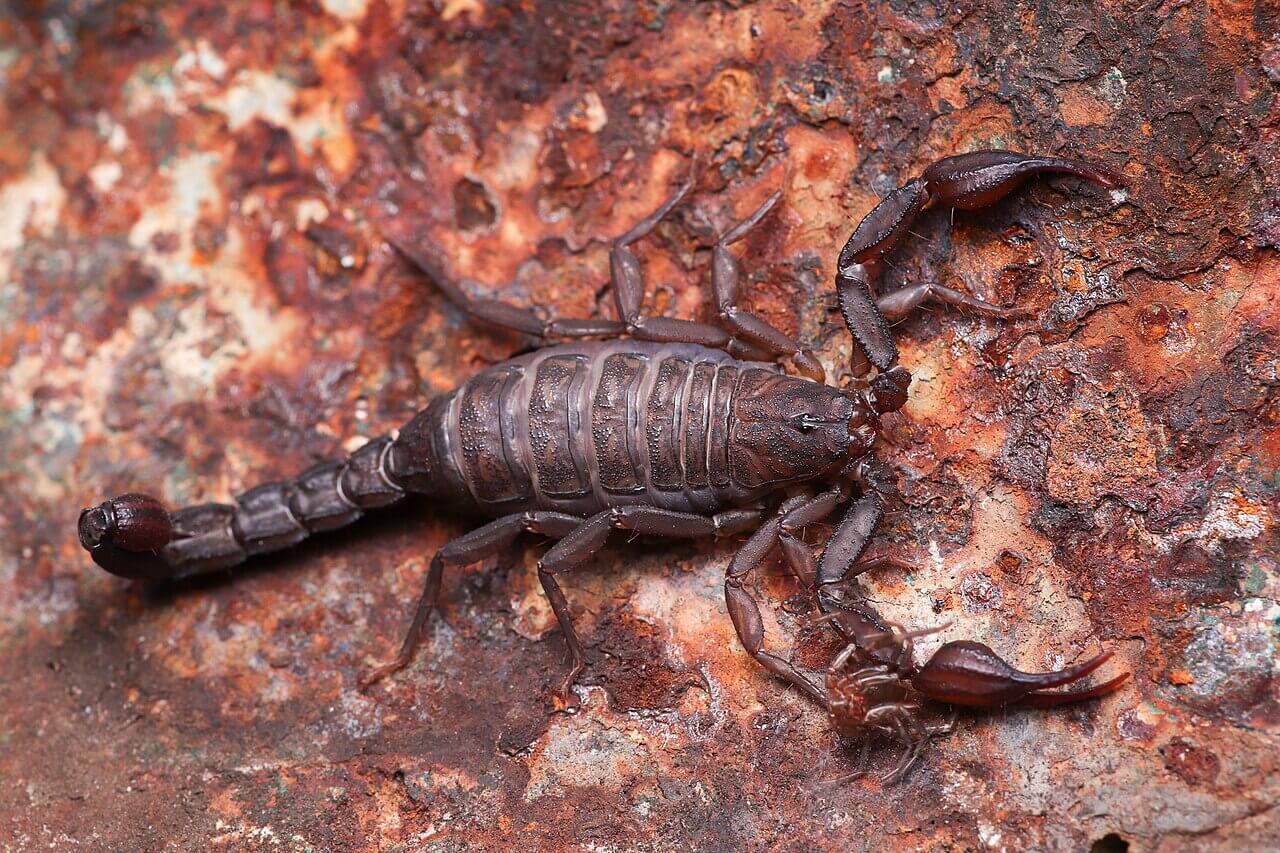
This is another one of the endemic animals of Mexico and it’s found in the central region of the country. Its size is medium, around 2 inches. It’s dark brown, although its legs become lighter. It’s a little-studied invertebrate that, to date, isn’t on the IUCN list.
5. Mexican golden red rump tarantula (Brachypelma albiceps)
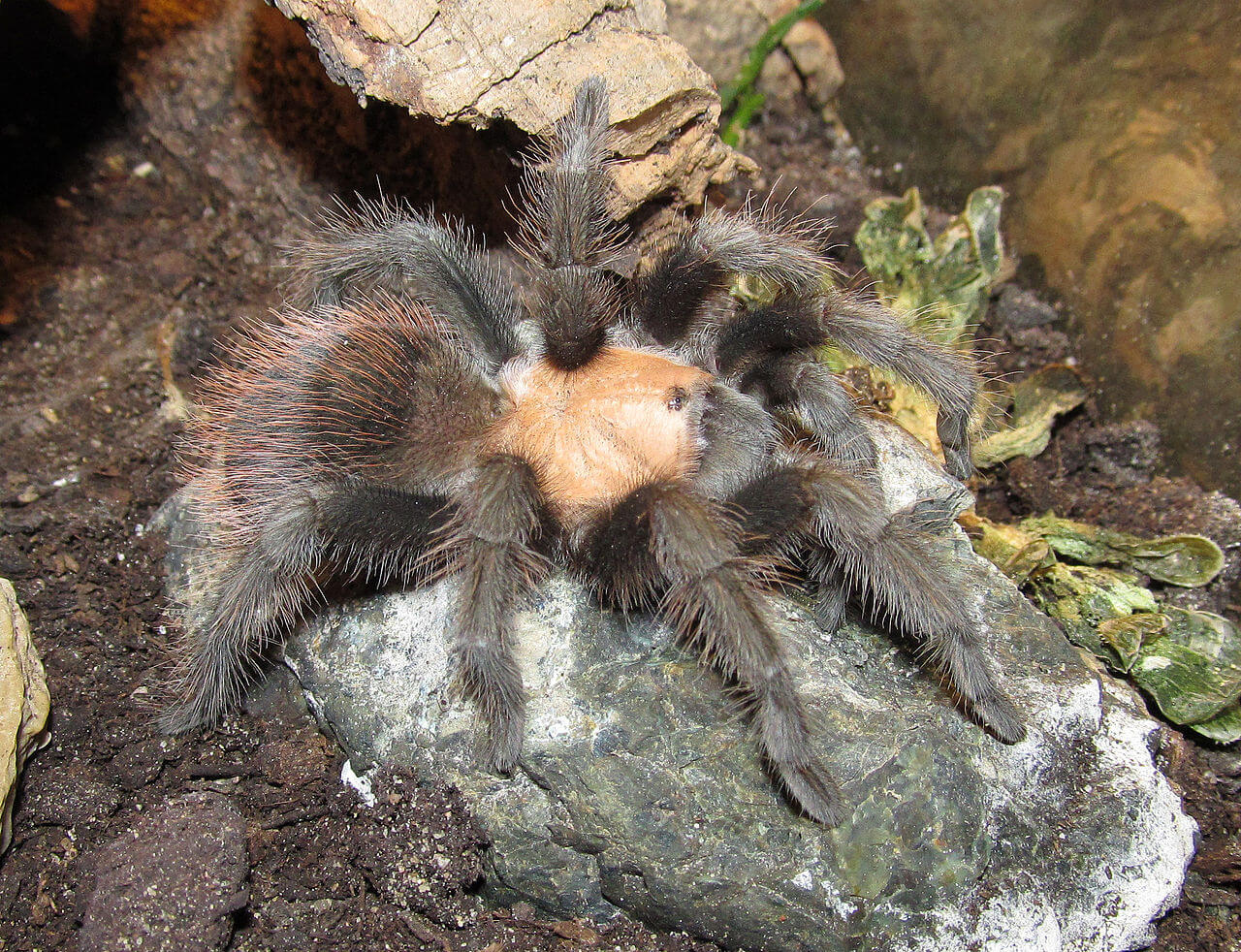
This is another type of arachnid native to Mexican lands, found in Puebla, Morelos, the State of Mexico, and Guerrero. It inhabits dry, thorny pine forests and even cultivated areas between 1017 and 7513 feet above sea level, although it has a preference for low and warm lands. The IUCN classifies it as “Least Concern”. Just the same, its threats include the following:
- Increased agriculture
- Harvesting for illegal traffic demand
- Urbanization and road construction
It has a black coloration, but its back has golden flashes to which it owes its common name. It also has hairs on its body.
Endemic fishes of Mexico
The Mexican ichthyofauna is made up of more than two thousand species, both in freshwater, estuarine, and oceanic environments. Likewise, there’s a great wealth of endemic species, with an estimated 271 specimens. Some examples are the following:
6. The Gulf of Mexico fringed sole (Gymnachirus texae)
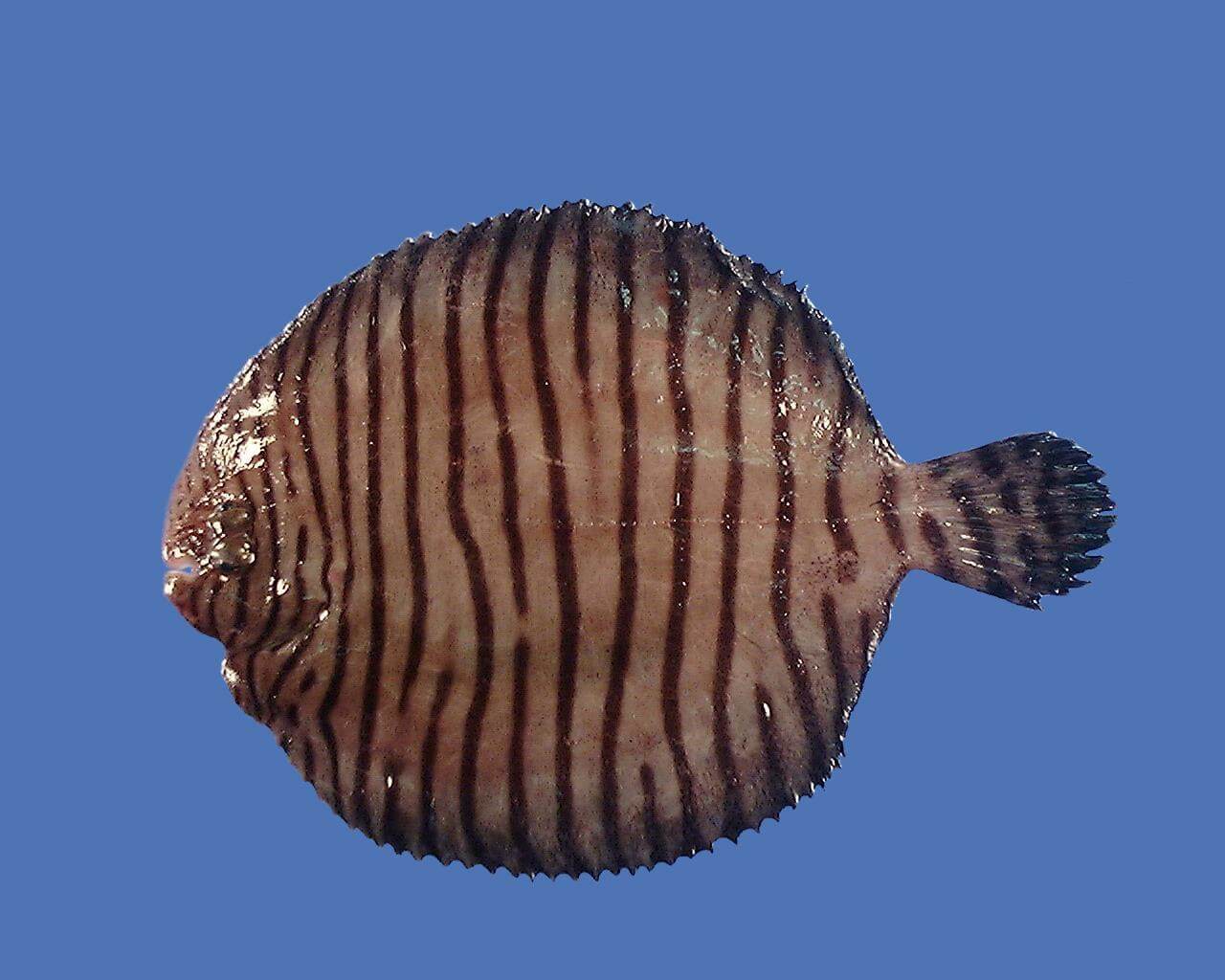
This fish is endemic to the Gulf of Mexico. It’s flat and demersal, which means that it inhabits the seabed. To be more precise, it swims at a depth range that goes from 65.5 to 613.5 feet. It has a maximum length of 5.5 inches and isn’t threatened by extinction, as the IUCN classifies it as of “minor concern.”
6. The Yucatan Killifish (Fundulus persimilis)
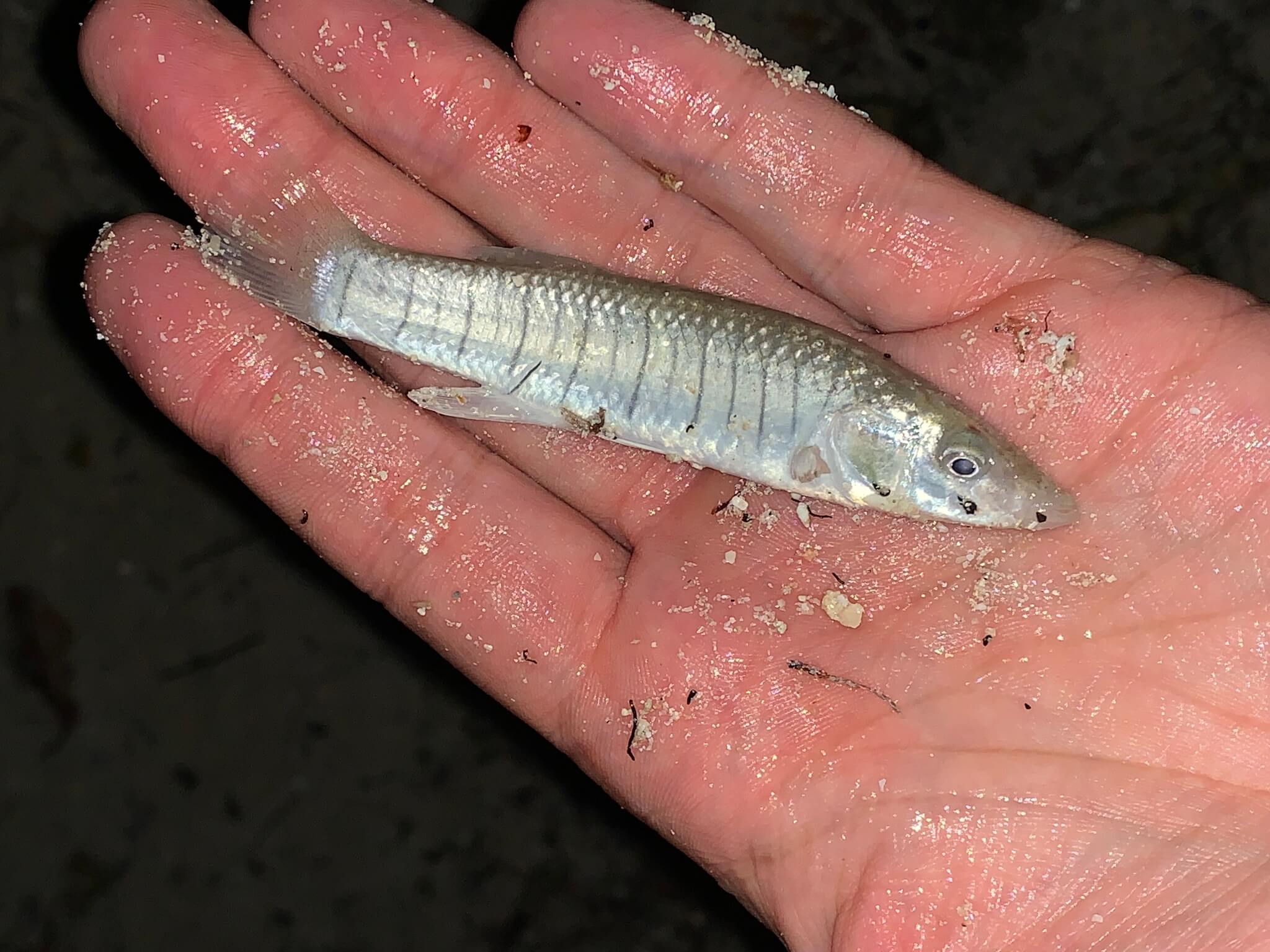
The Yucatan Killfish is a fish with a slender, compressed and elongated body, which can reach 6 inches in length, and females are usually the largest. It inhabits shallow (up to 3.3 feet) fresh to brackish waters in northern Yucatan. It’s considered “endangered” due to habitat degradation caused by urbanization and pollution.
8. Amphilophus istlanus
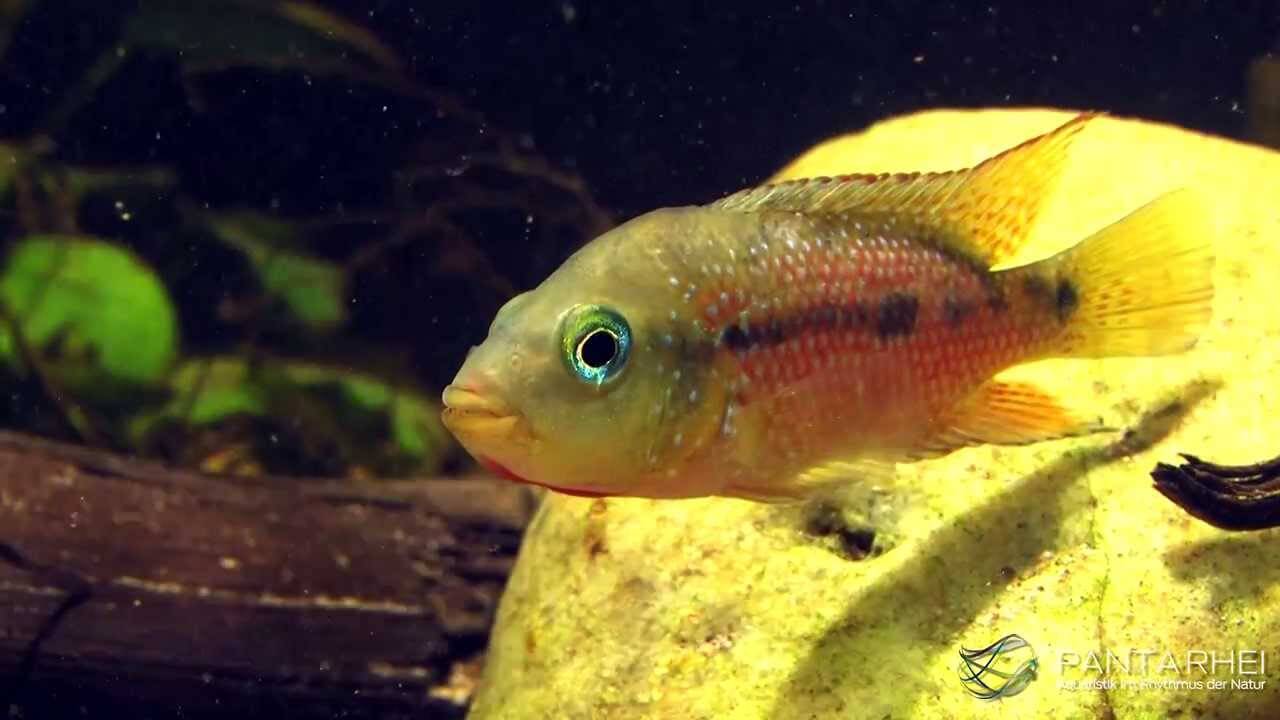
Described as both the “living diamond” and the “king of the Balsas”, this fish is located in the basin of the Balsas River. It has an average size of 10 inches and a maximum of 11 inches. The parental care of the nest, which is carried out by both males and females, is worth noting. It’s not threatened with extinction, according to the IUCN red list, but it’s sensitive to habitat degradation and the introduction of invasive species.
9. Alchichica silverside (Poblana alchichica)
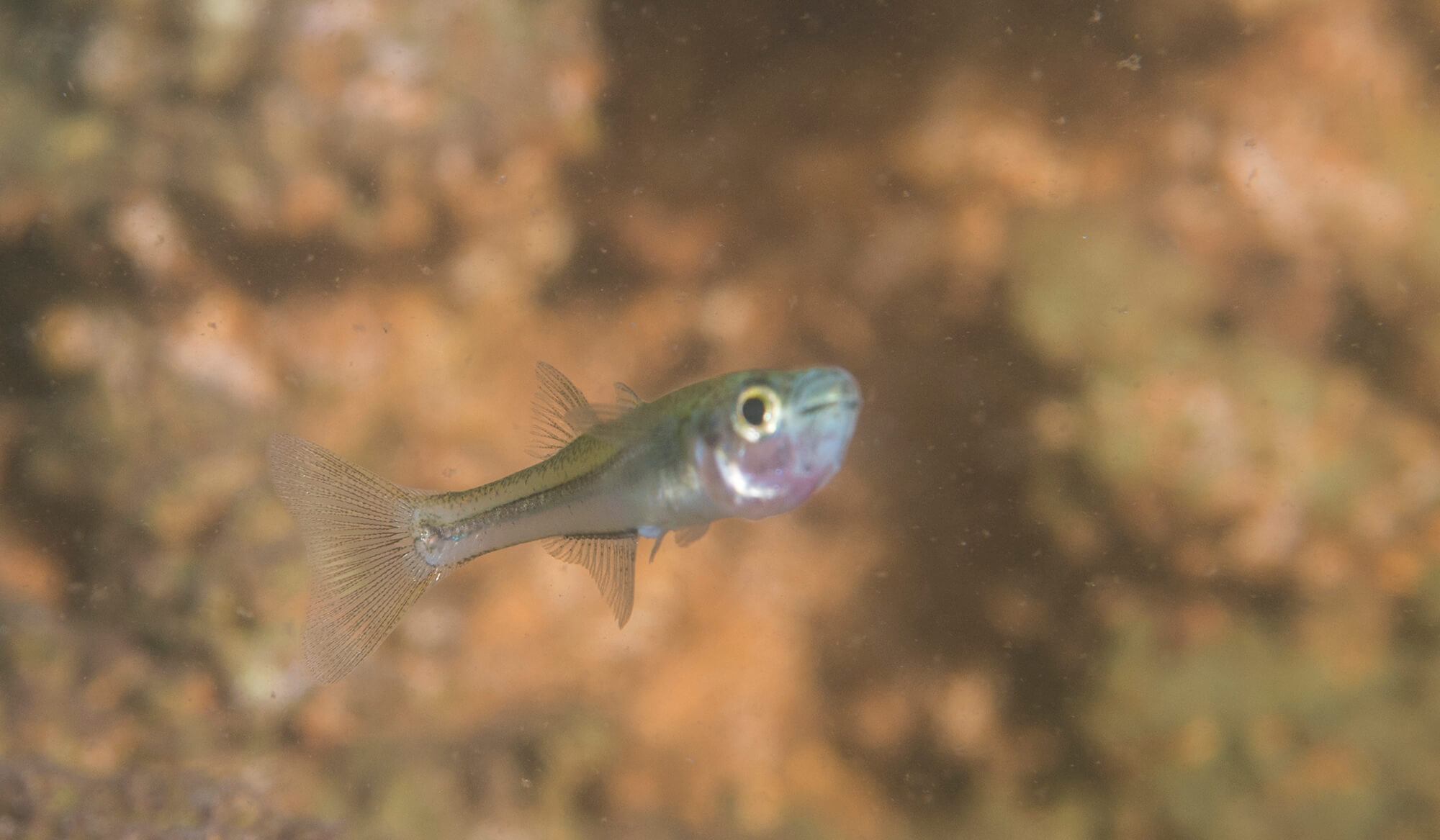
This is one of the endemic animals of Mexico that’s “in danger” of extinction. In fact, the IUCN classifies it as “critically endangered,” with a decreasing population. Its location is very limited, as it can only be found in the Alchichica lagoon in Puebla.
Its main threat is the degradation of its habitat, due to over-extraction of groundwater. It’s also harmed by tourism and occasional scuba diving.
10. Gobiesox juniperoserrai
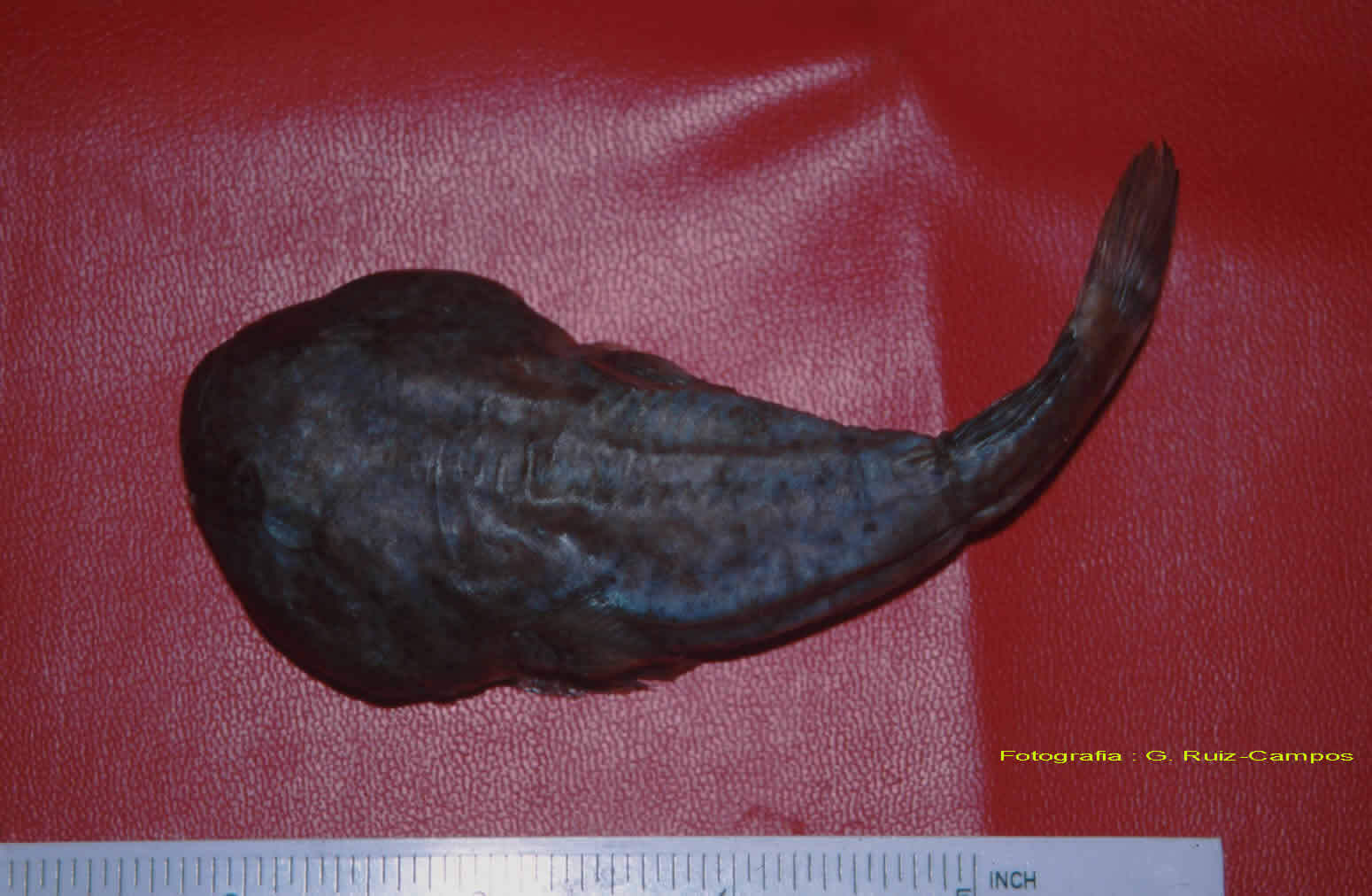
This is another Mexican endemic marine animal that lives in fresh water and is located in the oasis of Las Pocitas in Baja California Sur. It barely reaches approximately 4 inches in length and has a mottled brown coloration. At present, it’s not on the IUCN red list, but it’s one of the fish that’s “in danger” of extinction according to Mexican regulations, although it’s thought that it may be extinct.
Amphibians endemic to Mexico
In the case of amphibians, we also find richness and diversity in Mexican species. There are estimated to be around 361 specimens in the country, 174 of which are endemic, or 48.1%, according to Mexican governmental sources. Below, we’ll mention the most outstanding examples.
11. The axolotl (Ambystoma mexicanum)
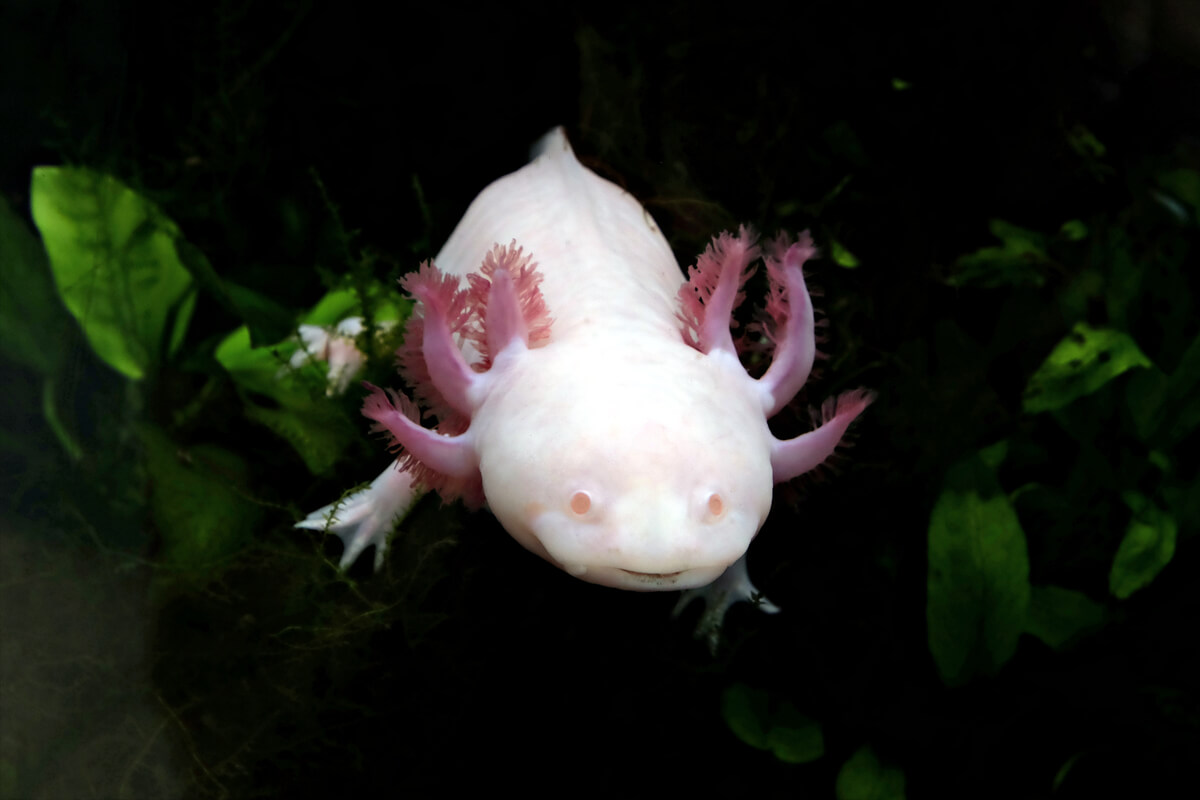
A peculiar and highly valued specimen in Mexican culture is the axolotl. It’s found in the Chalco and Xochimilco lakes in the Valley of Mexico. It stands out for its neoteny, a condition that allows it to conserve certain characteristics of its larval phase when it’s an adult without the need to undergo metamorphosis.
It’s a salamander with feathery external gills and a tail, which allow it to have an aquatic lifestyle. It also has a regenerative capacity. It’s “critically endangered” due to the following threats:
- Pollution
- Habitat loss
- Use as food
- The introduction of exotic species
12. The large-crested toad (Incilius cristatus)
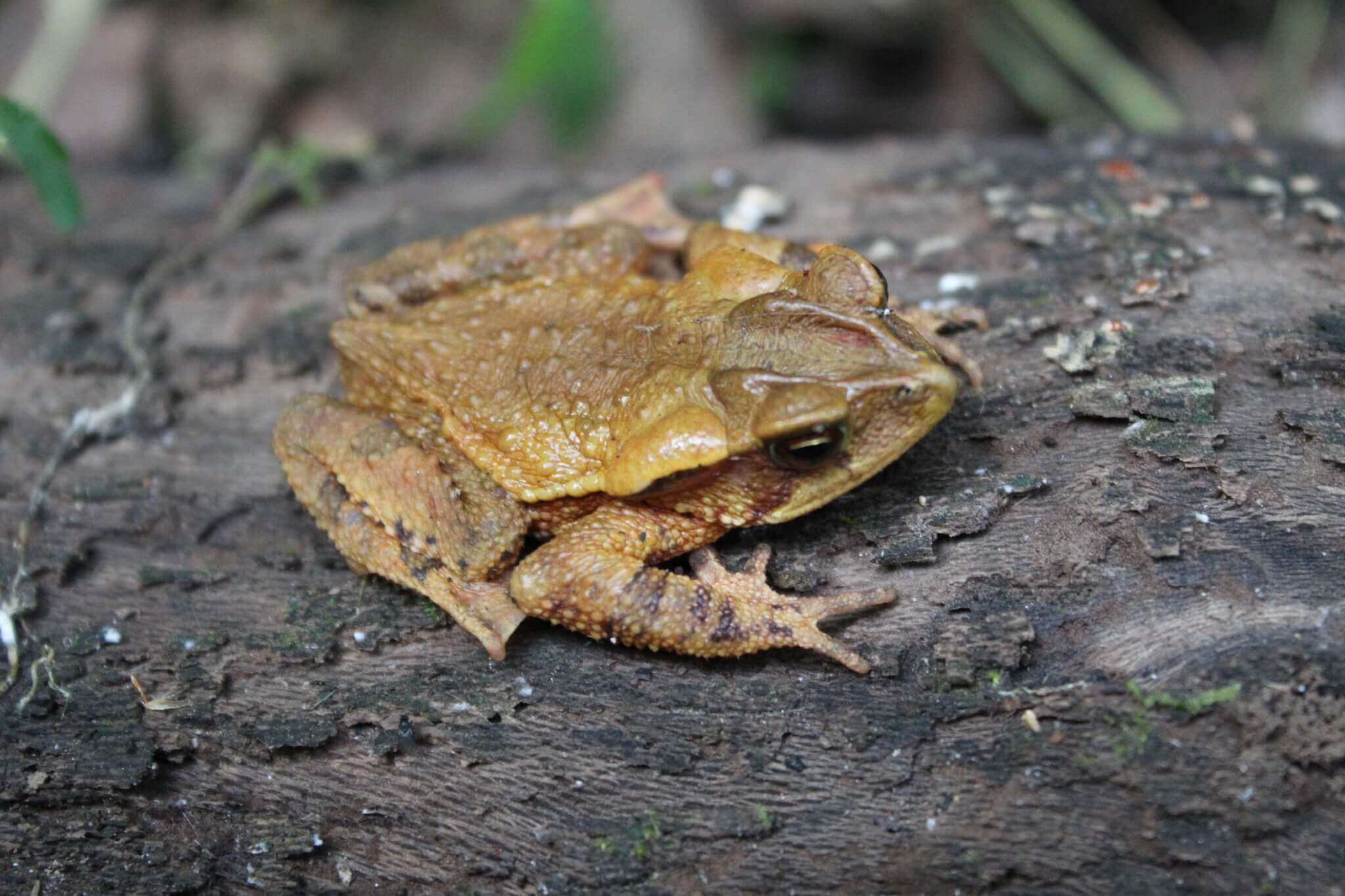
The name of this amphibian comes from a prominent oval crest on its head behind the eyes. It’s endemic to Puebla and Veracruz, in the central Sierra Madre Oriental, between 4265 and 6560 feet above sea level. According to the IUCN red list, it’s “in danger” of extinction. Its main threats are habitat loss and pollution.
13. The Sierra Madre frog (Lithobates sierramadrensis)

This is another of Mexico’s endemic amphibians. It owes its name to its geographic location. It’s found in the coniferous forests of Guerrero and Oaxaca, between 984 and 5905 feet above sea level. Its size is small, as it doesn’t exceed one centimeter in length. In addition, its color is brown.
At present, it isn’t considered an “endangered” species according to the IUCN Red List. However, in previous reviews, it was classified as “vulnerable.”
14. The Oaxacan caecilian (Dermophis oaxacae)

This amphibian can be found in the forests of the southern Mexican coast, in Chiapas, Colima, Guerrero, Jalisco, Oaxaca, and Michoacán. It’s subterranean and viviparous. It can reach 17.75 inches in length. Thanks to its wide distribution, it’s not threatened with extinction, so the IUCN lists it as “Least Concern”.
15. The Sierra Juarez hidden salamander (Thorius adelos)
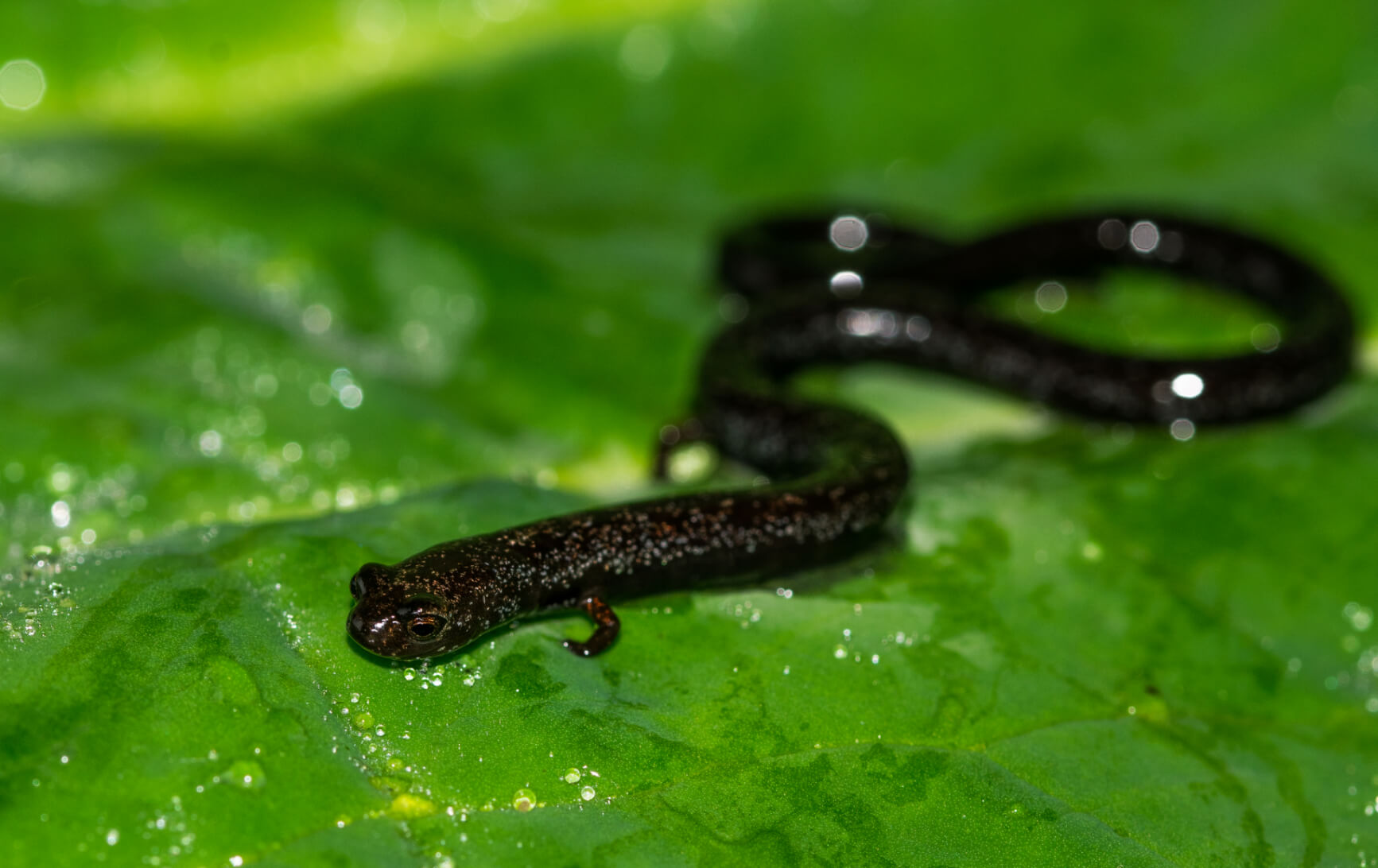
This salamander occupies the Atlantic slope of the Sierra de Juárez, in Oaxaca, in a cloud forest, at an altitude of between 4590 and 6150 feet. It’s very small–only a few millimeters long. It’s very sensitive to habitat disturbance and its conservation status is “near-threatened”.
A curious fact is that it was found for the first time inside arboreal bromeliads.
Reptiles that are endemic to Mexico
For reptiles, we found 864 specimens throughout Mexico. Of these, 493 are endemic (57 %). Among these species, snakes, vipers, and turtles stand out. Some may have a reduced location, while others have a wider range of distribution. Let’s see the following five species!
16. The Mexican alligator lizard (Abronia graminea)
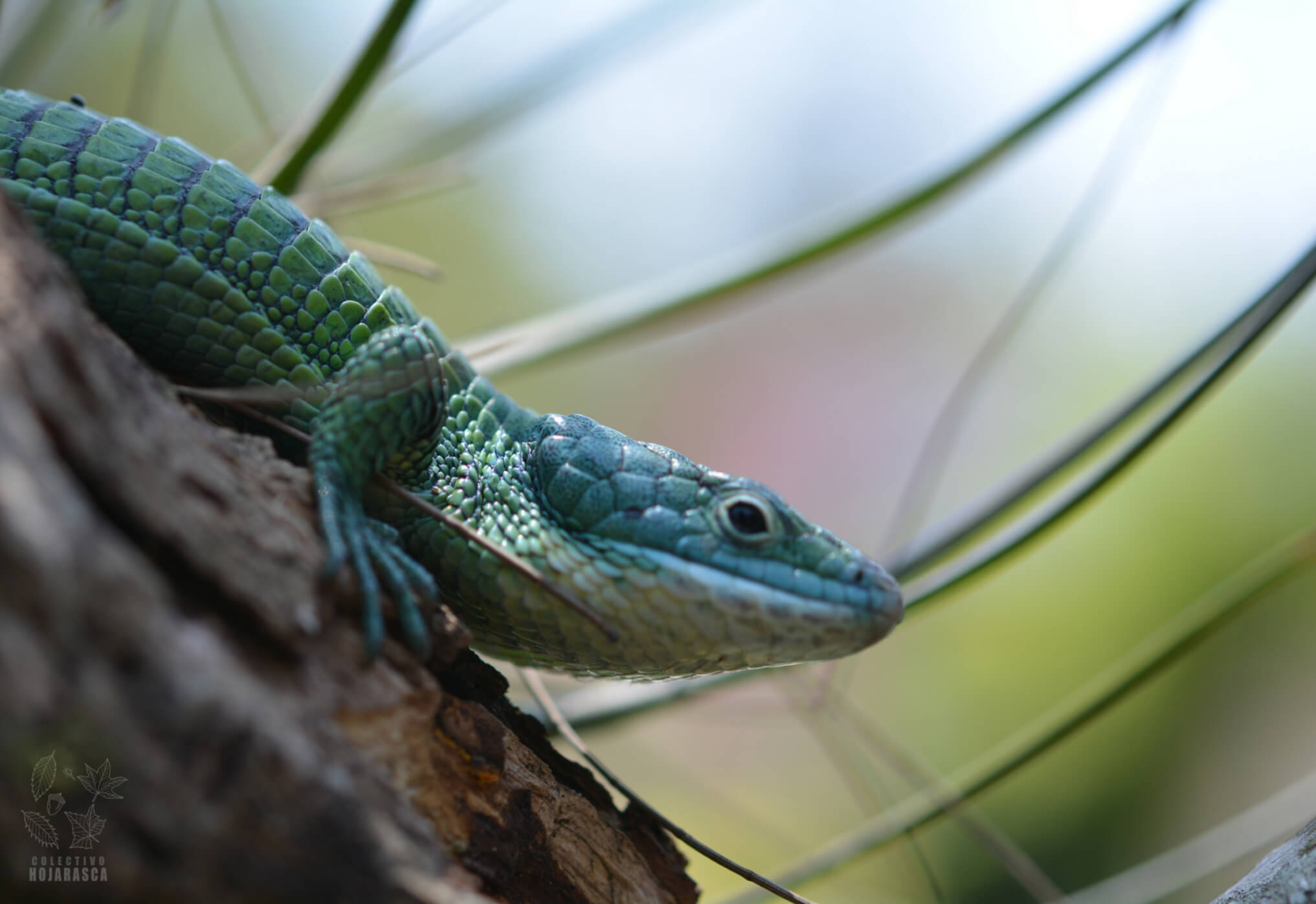
The Mexican alligator lizard, also known as the green arboreal alligator lizard, is an endemic reptile found in Veracruz, Puebla, and Oaxaca in pine, oak, and mesophytic mountain forests, between 4430 and 9000 feet above sea level. It has a body length of about four inches from the snout to the cloaca. If we include the tail, the complete size would be 6.3 inches.
17. The Santa Catalina rattlesnake (Crotalus catalinensis)
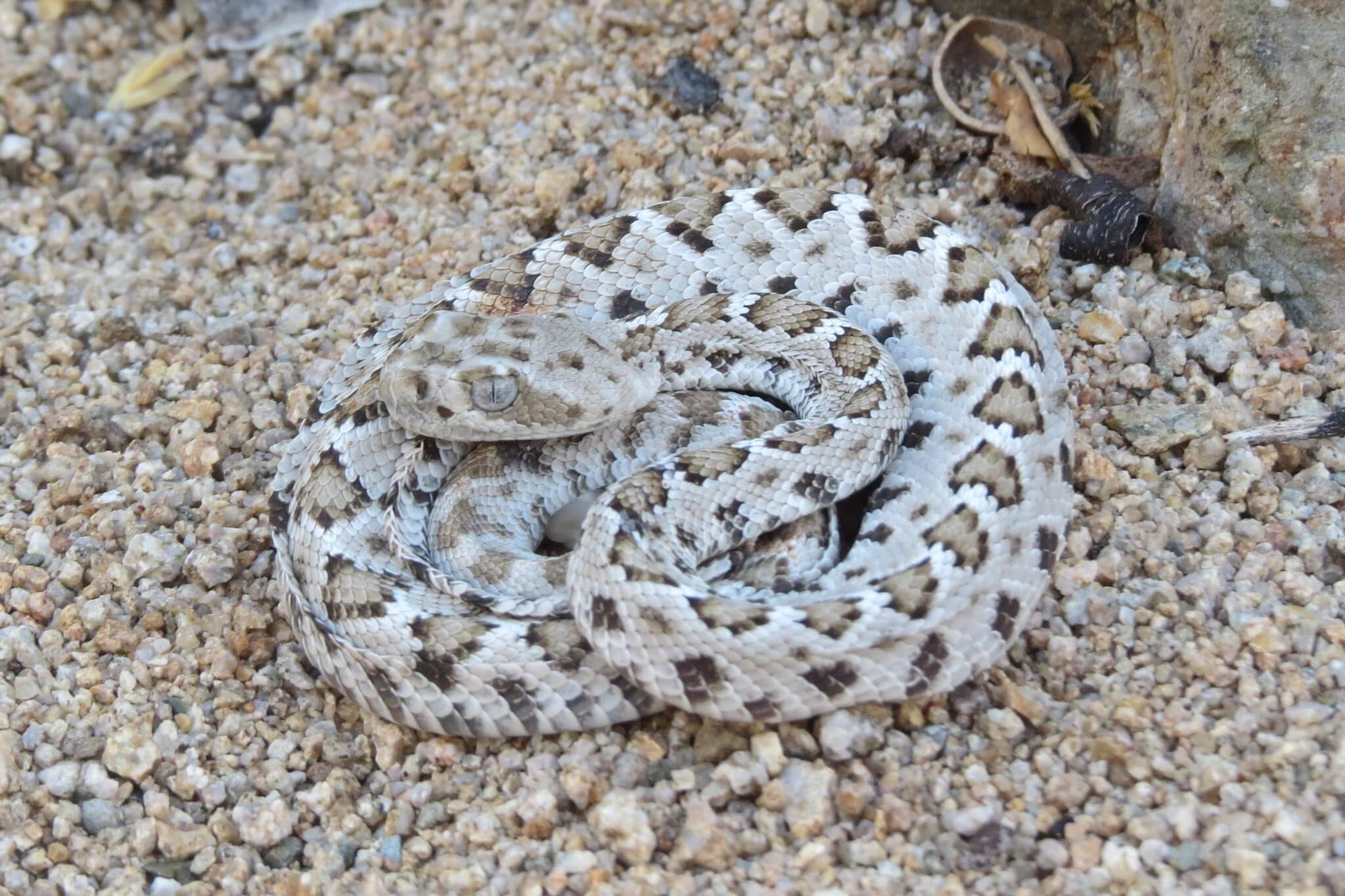
The Santa Catalina rattlesnake is a venomous species that inhabits Santa Catalina Island in Loreto Bay National Park, Mexico. It is small and slender. It feeds on another endemic species, the only mammal found in its habitat, the mouse Peromyscus slevini.
It has a calm behavior. It’s another of Mexico’s endemic animals “in critical danger” of extinction due to its reduced distribution and the fact that it’s a victim of illegal killing and collection.
Despite its name, the Santa Catalina rattlesnake is a species that lacks the “rattle” in its tail, as the last segment degenerates and falls off with molting.
18. The Mexican pygmy rattlesnake (Crotalus ravus)
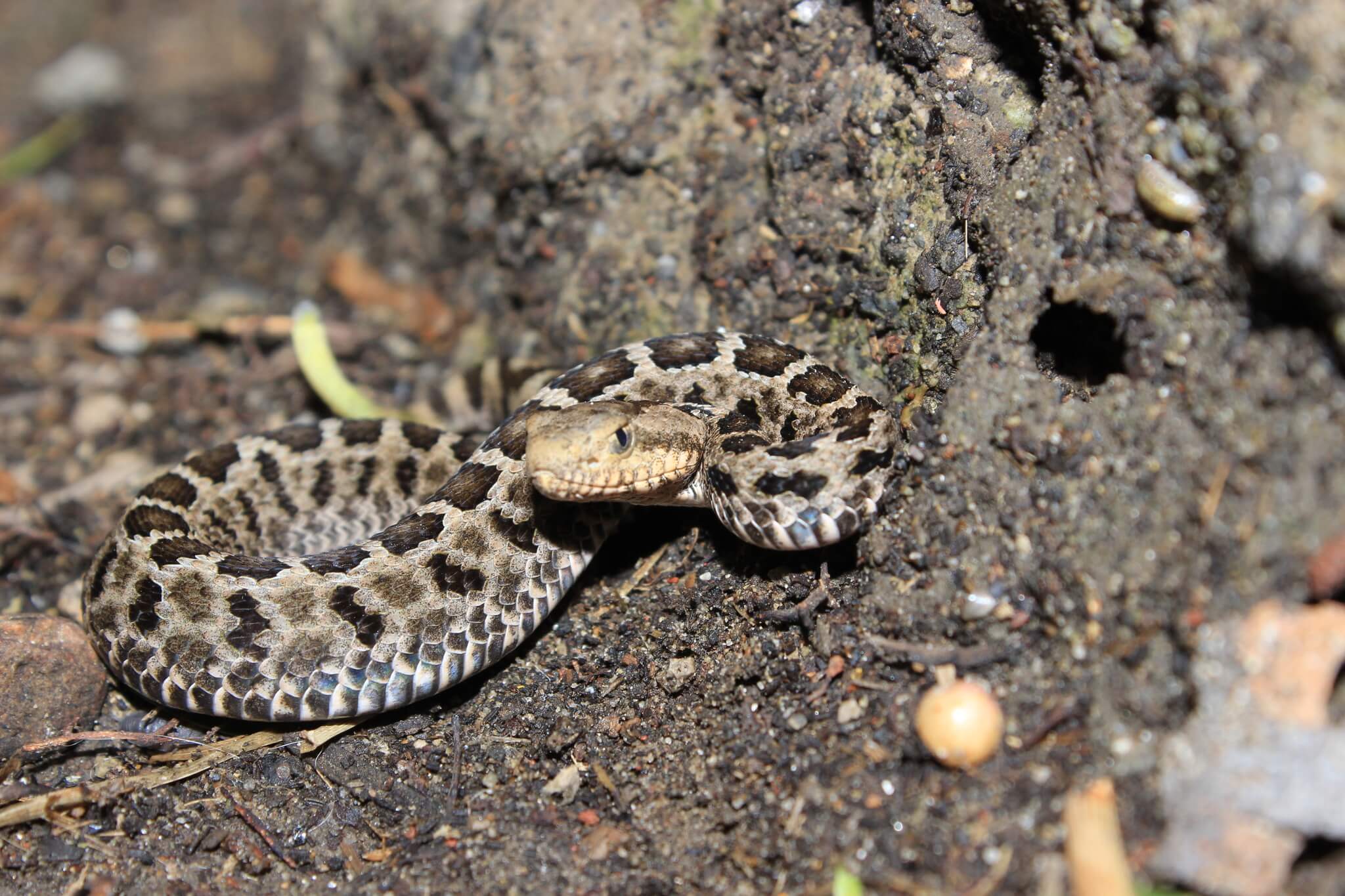
The Mexican Pygmy Rattlesnake inhabits central Mexico in various types of forests. Among them are cloud, conifer, pine, and oak forests. It can also be found in agricultural areas. Its elevation range oscillates between 4900 and 9850 feet above sea level. Although listed as “Least Concern” by the IUCN, it’s sensitive to habitat loss due to agricultural expansion.
19. The Mexican Mole Lizard (Bipes biporus)
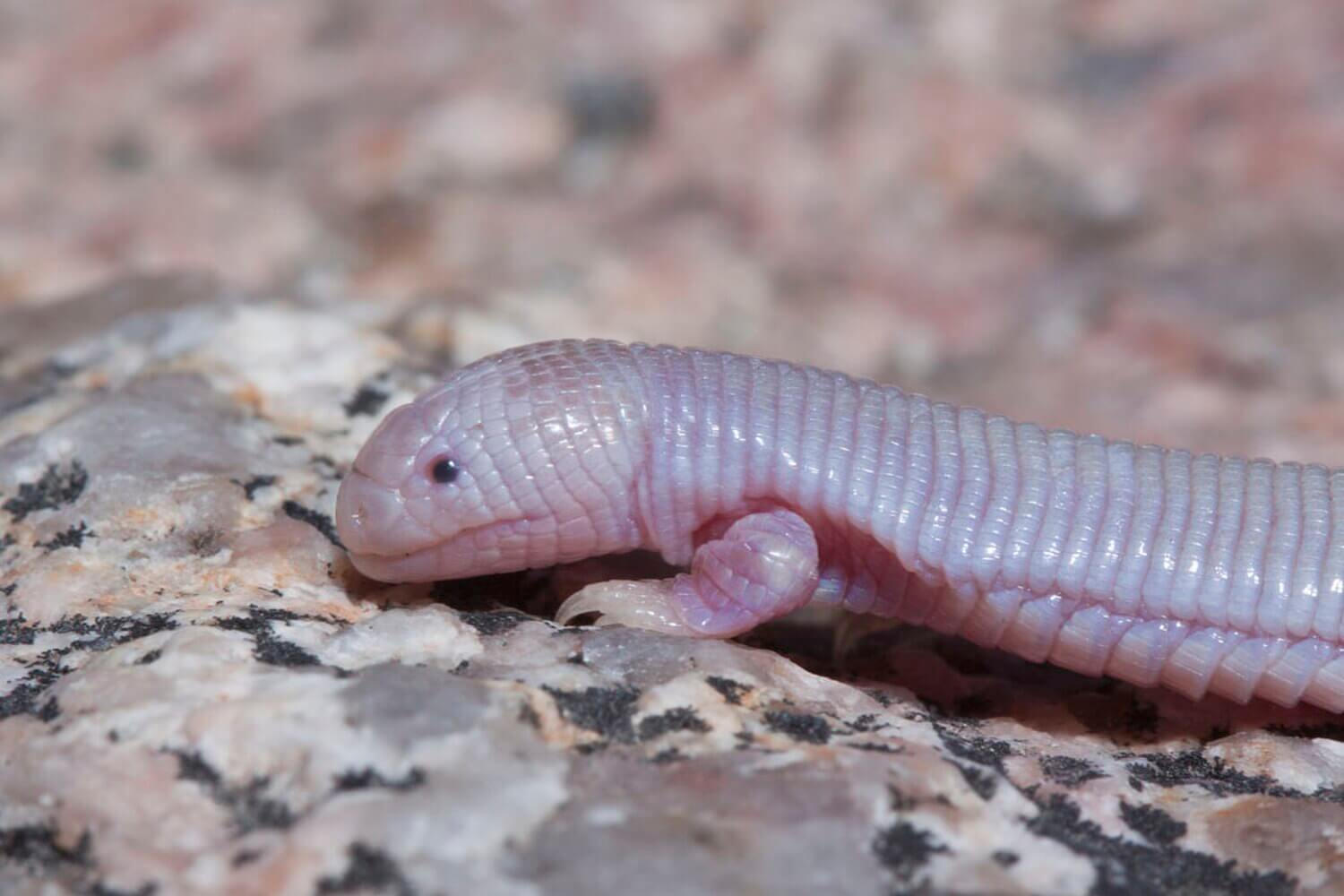
This reptile is found only in the Baja California peninsula in dry and desert lands with shrubby vegetation characteristic of these environments. It stands out for its burrowing behavior. In addition, it’s a real architect, as it builds a sophisticated system of burrows under the ground. It’s not “in danger” of extinction.
20. The Coahuilan box turtle (Terrapene coahuila)

The Coahuilan box turtle is endemic to the Cuatro Cienegas basin in the state of Coahuila, which has an average elevation of 2360 feet. It’s aquatic and lives in fresh water. It has dark skin and a yellow carapace, which may be covered with algae.
The male usually has a larger carapace than the female. It’s currently “endangered” due to the loss of the wetlands where it lives.
Endemic birds of Mexico
When speaking of endemic animals of Mexico, we can’t fail to mention all its birds, as Mexico ranks 10th in richness, with more than 1,000 species and 106 endemic species (about 11.4%). These specimens occupy varied habitats, but are usually concentrated in the Sierra Madre Occidental, Pacific coastal plain and Balsas basin. We’ll tell you about five of these winged animals!
21. Guadalupe Storm-Petrel (Hydrobates macrodactylus)
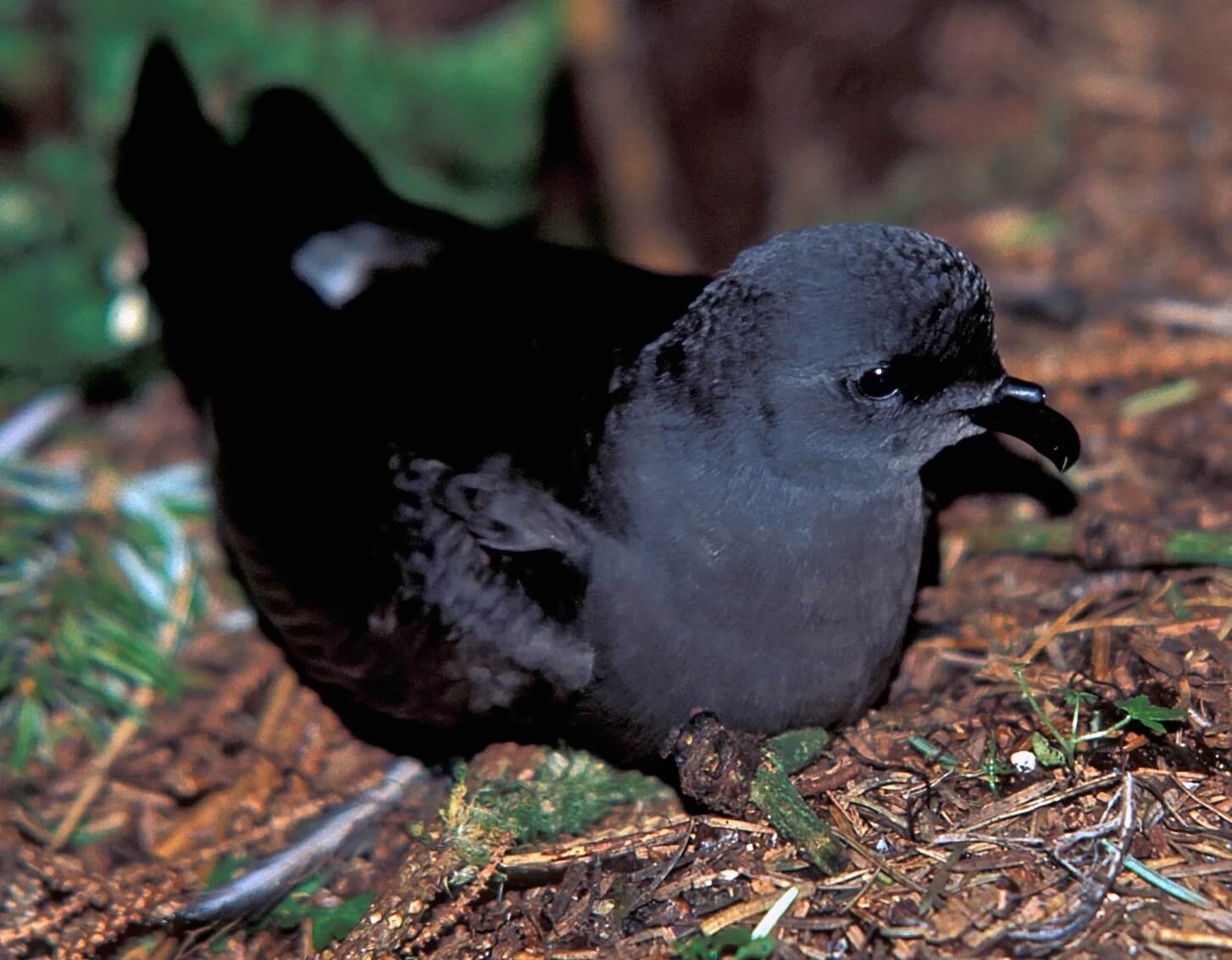
This is a bird with a very restricted location, endemic to Guadalupe Island in Mexico. It’s approximately 9 inches in size and has a dark coloration with a white rump. The underparts are usually paler than the upperparts. It also has a forked tail.
The IUCN classifies it as in critical danger of extinction, although it could be extinct.
This is due to its absence and lack of appearance since 1912. However, exhaustive studies must take place to verify its conservation status, as there’s hope of survival, and it’s estimated to have a fairly small population.
22. The short-crested coquette (Lophornis brachylolophus)
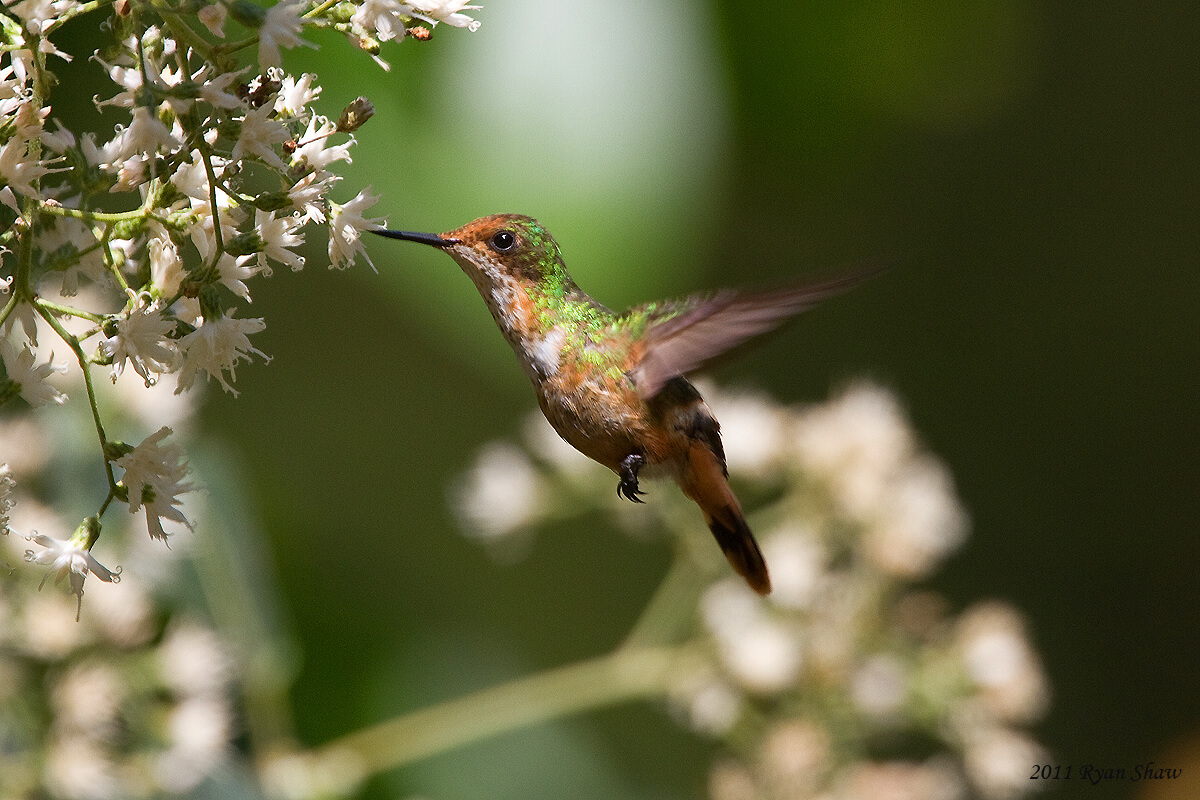
The short-crested coquette a hummingbird species found only in Mexico, with a reduced distribution of a 15.5-mile stretch in the rainforests and coffee plantations of the Sierra Madre del Sur, between 350 and 700 miles above sea level. It’s small in size (2.75 inches) and males have a striking orange crest.
It’s another one of Mexico’s endemic animals that’s threatened with extinction, and the IUCN has classified it as “critically endangered” since 2000. This is due to its restricted distribution and habitat degradation.
23. The maroon-fronted parrot (Rhynchopsitta terrisi)

One of this country’s types of parrots is the maroon-fronted parrot. It lives in the mountains of northeastern Mexico, in pine, oak, conifer, and mixed forests, between 6560 and 11500 feet above sea level. It measures 15.75 to 17.75 inches and is dark green in color, with a brown forehead and a brown stripe around the eye. It has reddish tones on the shoulders and a yellow eye ring. It has a dark bill and a long tail.
It’s also “endangered” due to habitat degradation and its small distribution.
24. The Guadalupe Junco (Junco insularis)
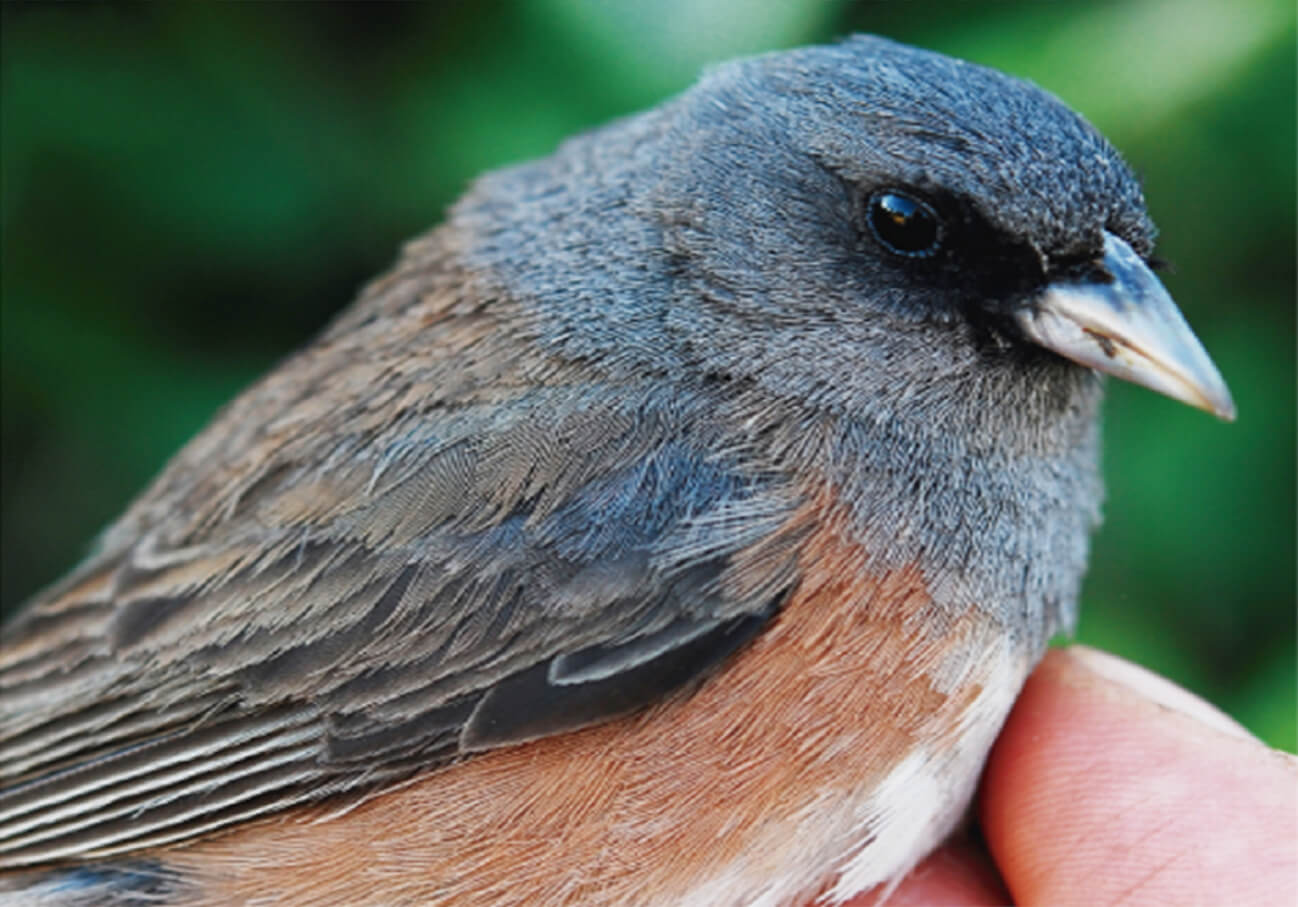
This is one of Mexico’s endemic animals from Guadalupe Island, distributed irregularly in the northern part. Its habitat includes pine, oak, and cypress groves, between 8530 and 9850 feet above sea level. It’s also found in thickets above sea level.
It’s a small bird with gray and brown tones but with dark parts of the wings and tail. It has white edges on the flight feathers, as well as on the belly. It’s also “highly endangered” due to habitat loss and other threats.
25. The Guadalupe Island house finch (Haemorhous mexicanus amplus)

This house finch is a very abundant bird in Mexico and the United States, but the subspecies H. mexicanus amplus is endemic to Guadalupe Island. It generally has brownish to gray coloration, with dark streaks on the underparts.
In addition, males have pale yellow to red shades on the crown, eyebrows, cheeks, shoulders, rump, and belly. This is due to carotenoid pigments acquired through diet.
The Mexican finch of Guadalupe Island tends to have a darker brown and less gray back, with a heavier and longer bill.
Mammals that are endemic to Mexico
Last but not least, we have the list of Mexican mammals, a taxon with diverse representatives when it comes to morphologies, dimensions, and lifestyles. Not surprisingly, this country occupies the second place in endemism, with about 164 species (30.7%) of the 535 existing species. Therefore, we’ll end with the following five specimens.
26. The Mexican prairie dog (Cynomys mexicanus)
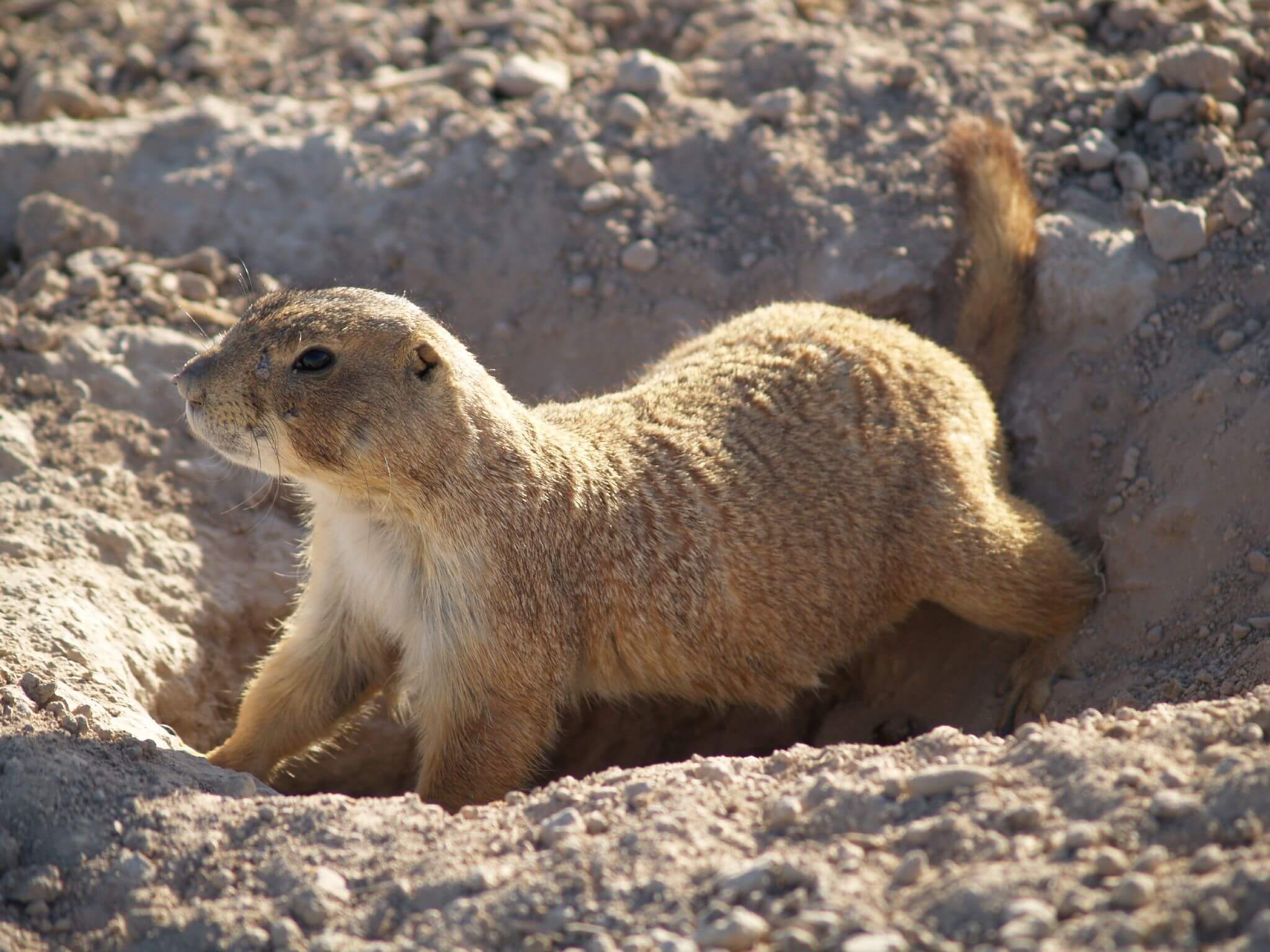
This is one of the of the endemic animals of Mexico, particularly to the states of Coahuila, Nuevo León, and San Luis Potosí in dry grassland valleys and intermontane basins 5250 and 7200 feet above sea level. Years ago, it was possible to find the Mexican prairie dog in Zacatecas.
Both sexes are of similar colors, gray or brown, with abundant black hairs. On the other hand, the belly is lighter. They have a dark tail tip. They’re “endangered,” and one of the main threats is the loss of their habitat.
Prairie dogs get their name from the sound they make when they scream, which is similar to the barking of dogs.
27. The volcano rabbit (Romerolagus diazi)
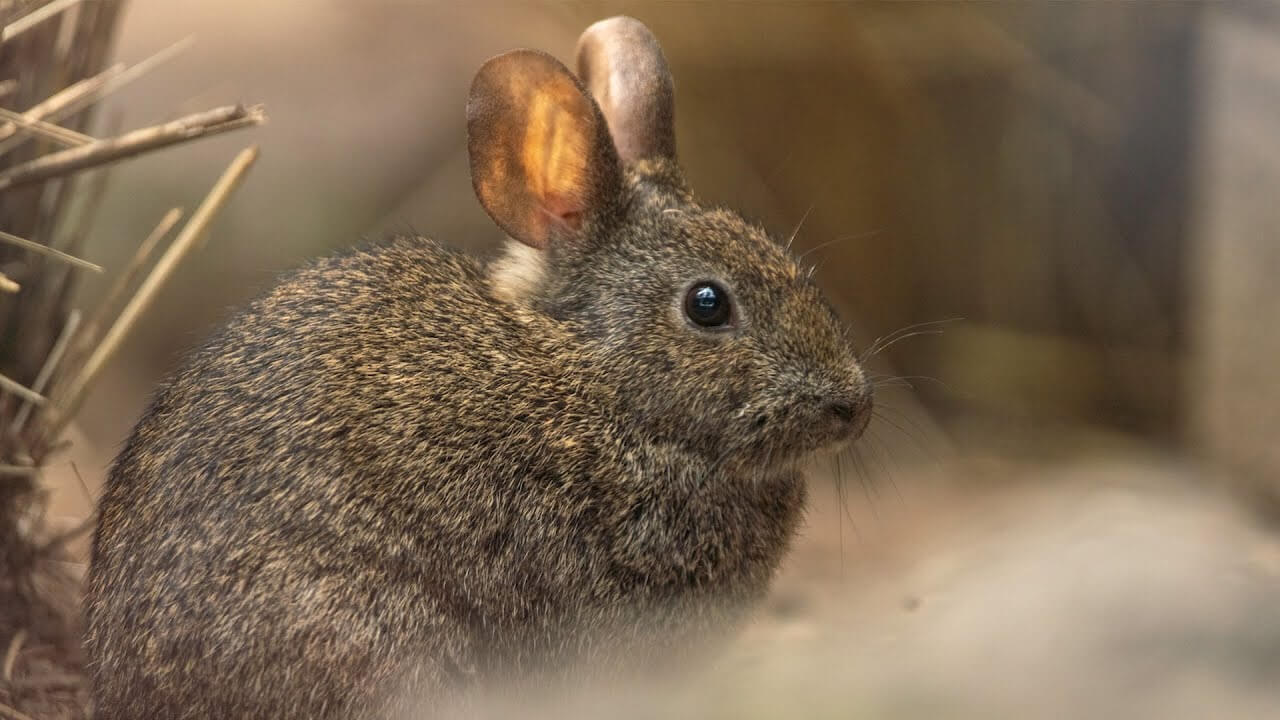
Also known as the teporingo or zacatuche, this rabbit is 5one of the endemic animals of central Mexico, around the volcanoes Popocatépetl, Iztaccihuatl, Pelado, Tláloc, and the Chichinautzin mountain range, at an altitude of between 2900 and 14000 feet above sea level.
It’s the smallest rabbit in the country, as it doesn’t exceed 13 inches in length and 1 pound, 3 ounces of body mass, with the female being considered heavier. It has yellowish-brown fur on the back and light gray on the belly. It also has short ears and legs, large eyes, and a vestigial tail.
Like other animals endemic to Mexico, it’s “in danger” of extinction due to habitat loss.
28. The banana bat (Musonycteris harrisoni)

This is a mammal that’s endemic to the Pacific coast of Mexico, in the states of Colima, Guerrero, Jalisco, Michoacan, and Morelos, up to 5250 feet above sea level. There is also a record of the species in Puebla. It has a grayish-brown color and barely exceeds 3 inches in length.
Its diet includes pollen and nectar from various flowers. It’s so named because its first observation was made in a banana tree, while it was feeding.
At the national level, it’s “in danger” of extinction. On the other hand, at the international level, it’s in the “vulnerable” category. The main threat is habitat loss from agriculture and fires.
29. Slevin’s mouse (Peromyscus slevini)

This is a rodent that’s endemic to Santa Catalina Island in Mexico. It has a light brown coloration with some dark hairs on the dorsal area, while the underparts are white. On the chest, it has cinnamon-colored hairs. The tail is darker than the body, but the underparts are light.
It has been “critically endangered” since 1996, with a declining population. Its greatest threat is competition for resources with an introduced species, the cactus mouse (Peromysucs eremicus).
30. The vaquita (Phocoena sinus)
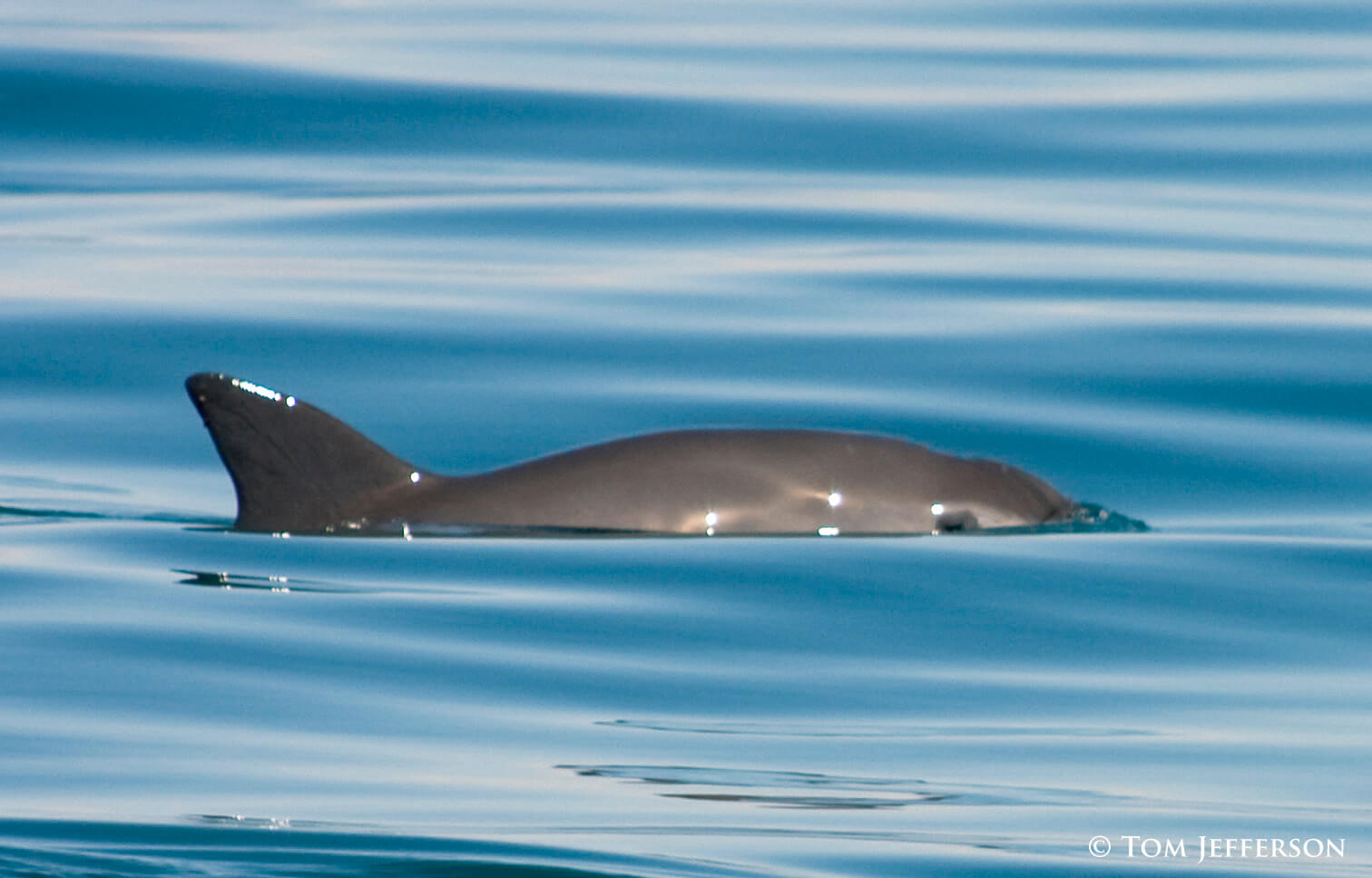
A marine mammal with a restricted location in the northern Gulf of California, the vaquita inhabits shallow waters (up to 165 feet deep) near the coast. It’s “critically endangered” according to the IUCN list, mainly because of the pressure of fishing on its populations.
The vaquita is similar in appearance to the harbor porpoise, although it’s thinner. It usually measures between 47 and 59 inches in length, and the female is usually smaller than the male. It has a dark gray body on its back, while its belly is lighter.
Did you know all these species?
As you can see, Mexico is home to a great diversity of animal species in its lands. Endemic species are also abundant. Had you already heard of these species? They’re just a small sample of its richness, and there are still more species to be discovered.
It should also be noted that many of Mexico’s endemic animals are on the verge of extinction. Some have reduced distribution and are affected by the loss of their habitat, mostly due to anthropogenic practices. This calls for reflection on our role on the planet and invites us to take action so that we don’t lose the valuable resources that nature offers us.
Mexico is one of the megadiverse countries in the world, which means that it has a great wealth of living beings. This is thanks to its privileged geographic location and the diversity of ecosystems and landscapes it presents. In addition, it has a high percentage of endemic species, that is, fauna that’s only found in this territory. Do you want to know more about the endemic animals of Mexico?
These species can be terrestrial or aquatic, some with quite limited habitats. In fact, we can mention examples in almost all taxonomic groups. In particular, mammals, reptiles, marine invertebrates, insects, fish, amphibians, and birds stand out. Below, we’ll present 30 of the animals that are exclusive to this country.
Endemic invertebrates of Mexico
We’ll begin the list with a less studied group but with a large number of endemic species. In addition, they’re just as important as the rest of the living beings, as they contribute great benefits to the ecosystem. We’re talking about invertebrates, represented by a diversity of insects, crustaceans, corals, and even sponges. Let’s see some examples along with their characteristics!
1. The brachyuran crab (Pseudothelphusa dugesi)

This is a small-sized species, because it measures about 2 inches. It’s also brownish in color and is in danger of extinction, according to Mexican regulations.
The International Union for Conservation of Nature (IUCN) explains that it has insufficient data to catalog this species. Likewise, it’s only known in one locality in Mexico, in the state of Durango.
Its greatest threats are the destruction of its home, due to urban development and the pollution of streams.
2. The esperanza swallowtail or Oaxacan swallowtail (Papilio esperanza)

The esperanza swallowtail, also known as the Oaxacan swallowtail. It’s endemic to Mexico, with a distribution restricted to the cloud forests of the Sierra Norte of the state of Oaxaca, between 5250 and 8200 feet above sea level.
This butterfly species is on the IUCN Red List in the “endangered” category due to its very limited location. In addition, its population is estimated to be very small, with a maximum size of 335 individuals and about 112 sexually mature individuals.
3. The Morelos scorpion (Centruroides limpidus)

Mexico records numerous scorpion stings, and one of the culprits is the Morelos scorpion. In fact, it’s the third most venomous scorpion in the country, which is located in the following states:
- Puebla
- Mexico
- Morelos
- Guerrero
- Veracruz
- Querétaro
- Michoacán
It has a total length of 1.85 to 2.17 inches. It’s light yellow in color but with brown spots.
4. The Mexican scorpion (Vaejovis mexicanus)

This is another one of the endemic animals of Mexico and it’s found in the central region of the country. Its size is medium, around 2 inches. It’s dark brown, although its legs become lighter. It’s a little-studied invertebrate that, to date, isn’t on the IUCN list.
5. Mexican golden red rump tarantula (Brachypelma albiceps)

This is another type of arachnid native to Mexican lands, found in Puebla, Morelos, the State of Mexico, and Guerrero. It inhabits dry, thorny pine forests and even cultivated areas between 1017 and 7513 feet above sea level, although it has a preference for low and warm lands. The IUCN classifies it as “Least Concern”. Just the same, its threats include the following:
- Increased agriculture
- Harvesting for illegal traffic demand
- Urbanization and road construction
It has a black coloration, but its back has golden flashes to which it owes its common name. It also has hairs on its body.
Endemic fishes of Mexico
The Mexican ichthyofauna is made up of more than two thousand species, both in freshwater, estuarine, and oceanic environments. Likewise, there’s a great wealth of endemic species, with an estimated 271 specimens. Some examples are the following:
6. The Gulf of Mexico fringed sole (Gymnachirus texae)

This fish is endemic to the Gulf of Mexico. It’s flat and demersal, which means that it inhabits the seabed. To be more precise, it swims at a depth range that goes from 65.5 to 613.5 feet. It has a maximum length of 5.5 inches and isn’t threatened by extinction, as the IUCN classifies it as of “minor concern.”
6. The Yucatan Killifish (Fundulus persimilis)

The Yucatan Killfish is a fish with a slender, compressed and elongated body, which can reach 6 inches in length, and females are usually the largest. It inhabits shallow (up to 3.3 feet) fresh to brackish waters in northern Yucatan. It’s considered “endangered” due to habitat degradation caused by urbanization and pollution.
8. Amphilophus istlanus

Described as both the “living diamond” and the “king of the Balsas”, this fish is located in the basin of the Balsas River. It has an average size of 10 inches and a maximum of 11 inches. The parental care of the nest, which is carried out by both males and females, is worth noting. It’s not threatened with extinction, according to the IUCN red list, but it’s sensitive to habitat degradation and the introduction of invasive species.
9. Alchichica silverside (Poblana alchichica)

This is one of the endemic animals of Mexico that’s “in danger” of extinction. In fact, the IUCN classifies it as “critically endangered,” with a decreasing population. Its location is very limited, as it can only be found in the Alchichica lagoon in Puebla.
Its main threat is the degradation of its habitat, due to over-extraction of groundwater. It’s also harmed by tourism and occasional scuba diving.
10. Gobiesox juniperoserrai

This is another Mexican endemic marine animal that lives in fresh water and is located in the oasis of Las Pocitas in Baja California Sur. It barely reaches approximately 4 inches in length and has a mottled brown coloration. At present, it’s not on the IUCN red list, but it’s one of the fish that’s “in danger” of extinction according to Mexican regulations, although it’s thought that it may be extinct.
Amphibians endemic to Mexico
In the case of amphibians, we also find richness and diversity in Mexican species. There are estimated to be around 361 specimens in the country, 174 of which are endemic, or 48.1%, according to Mexican governmental sources. Below, we’ll mention the most outstanding examples.
11. The axolotl (Ambystoma mexicanum)

A peculiar and highly valued specimen in Mexican culture is the axolotl. It’s found in the Chalco and Xochimilco lakes in the Valley of Mexico. It stands out for its neoteny, a condition that allows it to conserve certain characteristics of its larval phase when it’s an adult without the need to undergo metamorphosis.
It’s a salamander with feathery external gills and a tail, which allow it to have an aquatic lifestyle. It also has a regenerative capacity. It’s “critically endangered” due to the following threats:
- Pollution
- Habitat loss
- Use as food
- The introduction of exotic species
12. The large-crested toad (Incilius cristatus)

The name of this amphibian comes from a prominent oval crest on its head behind the eyes. It’s endemic to Puebla and Veracruz, in the central Sierra Madre Oriental, between 4265 and 6560 feet above sea level. According to the IUCN red list, it’s “in danger” of extinction. Its main threats are habitat loss and pollution.
13. The Sierra Madre frog (Lithobates sierramadrensis)

This is another of Mexico’s endemic amphibians. It owes its name to its geographic location. It’s found in the coniferous forests of Guerrero and Oaxaca, between 984 and 5905 feet above sea level. Its size is small, as it doesn’t exceed one centimeter in length. In addition, its color is brown.
At present, it isn’t considered an “endangered” species according to the IUCN Red List. However, in previous reviews, it was classified as “vulnerable.”
14. The Oaxacan caecilian (Dermophis oaxacae)

This amphibian can be found in the forests of the southern Mexican coast, in Chiapas, Colima, Guerrero, Jalisco, Oaxaca, and Michoacán. It’s subterranean and viviparous. It can reach 17.75 inches in length. Thanks to its wide distribution, it’s not threatened with extinction, so the IUCN lists it as “Least Concern”.
15. The Sierra Juarez hidden salamander (Thorius adelos)

This salamander occupies the Atlantic slope of the Sierra de Juárez, in Oaxaca, in a cloud forest, at an altitude of between 4590 and 6150 feet. It’s very small–only a few millimeters long. It’s very sensitive to habitat disturbance and its conservation status is “near-threatened”.
A curious fact is that it was found for the first time inside arboreal bromeliads.
Reptiles that are endemic to Mexico
For reptiles, we found 864 specimens throughout Mexico. Of these, 493 are endemic (57 %). Among these species, snakes, vipers, and turtles stand out. Some may have a reduced location, while others have a wider range of distribution. Let’s see the following five species!
16. The Mexican alligator lizard (Abronia graminea)

The Mexican alligator lizard, also known as the green arboreal alligator lizard, is an endemic reptile found in Veracruz, Puebla, and Oaxaca in pine, oak, and mesophytic mountain forests, between 4430 and 9000 feet above sea level. It has a body length of about four inches from the snout to the cloaca. If we include the tail, the complete size would be 6.3 inches.
17. The Santa Catalina rattlesnake (Crotalus catalinensis)

The Santa Catalina rattlesnake is a venomous species that inhabits Santa Catalina Island in Loreto Bay National Park, Mexico. It is small and slender. It feeds on another endemic species, the only mammal found in its habitat, the mouse Peromyscus slevini.
It has a calm behavior. It’s another of Mexico’s endemic animals “in critical danger” of extinction due to its reduced distribution and the fact that it’s a victim of illegal killing and collection.
Despite its name, the Santa Catalina rattlesnake is a species that lacks the “rattle” in its tail, as the last segment degenerates and falls off with molting.
18. The Mexican pygmy rattlesnake (Crotalus ravus)

The Mexican Pygmy Rattlesnake inhabits central Mexico in various types of forests. Among them are cloud, conifer, pine, and oak forests. It can also be found in agricultural areas. Its elevation range oscillates between 4900 and 9850 feet above sea level. Although listed as “Least Concern” by the IUCN, it’s sensitive to habitat loss due to agricultural expansion.
19. The Mexican Mole Lizard (Bipes biporus)

This reptile is found only in the Baja California peninsula in dry and desert lands with shrubby vegetation characteristic of these environments. It stands out for its burrowing behavior. In addition, it’s a real architect, as it builds a sophisticated system of burrows under the ground. It’s not “in danger” of extinction.
20. The Coahuilan box turtle (Terrapene coahuila)

The Coahuilan box turtle is endemic to the Cuatro Cienegas basin in the state of Coahuila, which has an average elevation of 2360 feet. It’s aquatic and lives in fresh water. It has dark skin and a yellow carapace, which may be covered with algae.
The male usually has a larger carapace than the female. It’s currently “endangered” due to the loss of the wetlands where it lives.
Endemic birds of Mexico
When speaking of endemic animals of Mexico, we can’t fail to mention all its birds, as Mexico ranks 10th in richness, with more than 1,000 species and 106 endemic species (about 11.4%). These specimens occupy varied habitats, but are usually concentrated in the Sierra Madre Occidental, Pacific coastal plain and Balsas basin. We’ll tell you about five of these winged animals!
21. Guadalupe Storm-Petrel (Hydrobates macrodactylus)

This is a bird with a very restricted location, endemic to Guadalupe Island in Mexico. It’s approximately 9 inches in size and has a dark coloration with a white rump. The underparts are usually paler than the upperparts. It also has a forked tail.
The IUCN classifies it as in critical danger of extinction, although it could be extinct.
This is due to its absence and lack of appearance since 1912. However, exhaustive studies must take place to verify its conservation status, as there’s hope of survival, and it’s estimated to have a fairly small population.
22. The short-crested coquette (Lophornis brachylolophus)

The short-crested coquette a hummingbird species found only in Mexico, with a reduced distribution of a 15.5-mile stretch in the rainforests and coffee plantations of the Sierra Madre del Sur, between 350 and 700 miles above sea level. It’s small in size (2.75 inches) and males have a striking orange crest.
It’s another one of Mexico’s endemic animals that’s threatened with extinction, and the IUCN has classified it as “critically endangered” since 2000. This is due to its restricted distribution and habitat degradation.
23. The maroon-fronted parrot (Rhynchopsitta terrisi)

One of this country’s types of parrots is the maroon-fronted parrot. It lives in the mountains of northeastern Mexico, in pine, oak, conifer, and mixed forests, between 6560 and 11500 feet above sea level. It measures 15.75 to 17.75 inches and is dark green in color, with a brown forehead and a brown stripe around the eye. It has reddish tones on the shoulders and a yellow eye ring. It has a dark bill and a long tail.
It’s also “endangered” due to habitat degradation and its small distribution.
24. The Guadalupe Junco (Junco insularis)

This is one of Mexico’s endemic animals from Guadalupe Island, distributed irregularly in the northern part. Its habitat includes pine, oak, and cypress groves, between 8530 and 9850 feet above sea level. It’s also found in thickets above sea level.
It’s a small bird with gray and brown tones but with dark parts of the wings and tail. It has white edges on the flight feathers, as well as on the belly. It’s also “highly endangered” due to habitat loss and other threats.
25. The Guadalupe Island house finch (Haemorhous mexicanus amplus)

This house finch is a very abundant bird in Mexico and the United States, but the subspecies H. mexicanus amplus is endemic to Guadalupe Island. It generally has brownish to gray coloration, with dark streaks on the underparts.
In addition, males have pale yellow to red shades on the crown, eyebrows, cheeks, shoulders, rump, and belly. This is due to carotenoid pigments acquired through diet.
The Mexican finch of Guadalupe Island tends to have a darker brown and less gray back, with a heavier and longer bill.
Mammals that are endemic to Mexico
Last but not least, we have the list of Mexican mammals, a taxon with diverse representatives when it comes to morphologies, dimensions, and lifestyles. Not surprisingly, this country occupies the second place in endemism, with about 164 species (30.7%) of the 535 existing species. Therefore, we’ll end with the following five specimens.
26. The Mexican prairie dog (Cynomys mexicanus)

This is one of the of the endemic animals of Mexico, particularly to the states of Coahuila, Nuevo León, and San Luis Potosí in dry grassland valleys and intermontane basins 5250 and 7200 feet above sea level. Years ago, it was possible to find the Mexican prairie dog in Zacatecas.
Both sexes are of similar colors, gray or brown, with abundant black hairs. On the other hand, the belly is lighter. They have a dark tail tip. They’re “endangered,” and one of the main threats is the loss of their habitat.
Prairie dogs get their name from the sound they make when they scream, which is similar to the barking of dogs.
27. The volcano rabbit (Romerolagus diazi)

Also known as the teporingo or zacatuche, this rabbit is 5one of the endemic animals of central Mexico, around the volcanoes Popocatépetl, Iztaccihuatl, Pelado, Tláloc, and the Chichinautzin mountain range, at an altitude of between 2900 and 14000 feet above sea level.
It’s the smallest rabbit in the country, as it doesn’t exceed 13 inches in length and 1 pound, 3 ounces of body mass, with the female being considered heavier. It has yellowish-brown fur on the back and light gray on the belly. It also has short ears and legs, large eyes, and a vestigial tail.
Like other animals endemic to Mexico, it’s “in danger” of extinction due to habitat loss.
28. The banana bat (Musonycteris harrisoni)

This is a mammal that’s endemic to the Pacific coast of Mexico, in the states of Colima, Guerrero, Jalisco, Michoacan, and Morelos, up to 5250 feet above sea level. There is also a record of the species in Puebla. It has a grayish-brown color and barely exceeds 3 inches in length.
Its diet includes pollen and nectar from various flowers. It’s so named because its first observation was made in a banana tree, while it was feeding.
At the national level, it’s “in danger” of extinction. On the other hand, at the international level, it’s in the “vulnerable” category. The main threat is habitat loss from agriculture and fires.
29. Slevin’s mouse (Peromyscus slevini)

This is a rodent that’s endemic to Santa Catalina Island in Mexico. It has a light brown coloration with some dark hairs on the dorsal area, while the underparts are white. On the chest, it has cinnamon-colored hairs. The tail is darker than the body, but the underparts are light.
It has been “critically endangered” since 1996, with a declining population. Its greatest threat is competition for resources with an introduced species, the cactus mouse (Peromysucs eremicus).
30. The vaquita (Phocoena sinus)

A marine mammal with a restricted location in the northern Gulf of California, the vaquita inhabits shallow waters (up to 165 feet deep) near the coast. It’s “critically endangered” according to the IUCN list, mainly because of the pressure of fishing on its populations.
The vaquita is similar in appearance to the harbor porpoise, although it’s thinner. It usually measures between 47 and 59 inches in length, and the female is usually smaller than the male. It has a dark gray body on its back, while its belly is lighter.
Did you know all these species?
As you can see, Mexico is home to a great diversity of animal species in its lands. Endemic species are also abundant. Had you already heard of these species? They’re just a small sample of its richness, and there are still more species to be discovered.
It should also be noted that many of Mexico’s endemic animals are on the verge of extinction. Some have reduced distribution and are affected by the loss of their habitat, mostly due to anthropogenic practices. This calls for reflection on our role on the planet and invites us to take action so that we don’t lose the valuable resources that nature offers us.
All cited sources were thoroughly reviewed by our team to ensure their quality, reliability, currency, and validity. The bibliography of this article was considered reliable and of academic or scientific accuracy.
- Almaraz, M. E., León, J. L., & Molina, M. A. (2013). The Population Ecology and Conservation of Pterourus esperanza (Insecta: Lepidoptera): An Ancestral Swallowtail Butterfly in the Northern Sierra of Oaxaca, Mexico. Annals of the Entomological Society of America 106(6): 753-760. https://bioone.org/journals/annals-of-the-entomological-society-of-america/volume-106/issue-6/AN12107/The-Population-Ecology-and-Conservation-of-Pterourus-esperanza-Insecta/10.1603/AN12107.short
- Álvarez, C. S., & Cortés, C. P. (2002). Peromyscus slevini. Mammalian Species, 705, 1-2. https://www.researchgate.net/publication/316148193_Peromyscus_slevini
- Álvarez, S. T., Lacher, T. & Vázquez, E. (2019). Cynomys mexicanus. The IUCN Red List of Threatened Species 2019: e.T6089A139607891. https://www.iucnredlist.org/species/6089/139607891
- Armas, L., & Martín, F. E. (2008). El género Centruroides Marx, 1890 (Scorpiones: Buthidae) en el estado de Veracruz, México. Boletín Sociedad Entomológica Aragonesa, 43, 7–22. http://sea-entomologia.org/PDF/BSEA43ARACNO/B43007.pdf
- Arroyo, C, J. & Ospina, G. S. (2015). Musonycteris harrisoni. The IUCN Red List of Threatened Species 2015: e.T14003A22099002. https://www.iucnredlist.org/species/14003/22099002
- Avila, V. H., Frost, D.R. & Arnaud, G. (2007). Crotalus catalinensis. The IUCN Red List of Threatened Species 2007: e.T64314A12764544. https://www.iucnredlist.org/species/64314/12764544
- Bergstresser, K. (2002). Musonycteris harrisoni. Animal Diversity Web. Consultado el 18 de diciembre de 2023. https://animaldiversity.org/accounts/Musonycteris_harrisoni/
- BirdLife International. (2018). Hydrobates macrodactylus. The IUCN Red List of Threatened Species 2018: e.T22698530A132651919. https://www.iucnredlist.org/species/22698530/132651919
- BirdLife International. (2018). Lophornis brachylophus. The IUCN Red List of Threatened Species 2018: e.T22687196A130649157. https://www.iucnredlist.org/species/22687196/130649157
- BirdLife International. (2020). Rhynchopsitta terrisi. The IUCN Red List of Threatened Species 2020: e.T22685772A179400190. https://www.iucnredlist.org/species/22685772/179400190
- Casanova, M. (2017). Bipes biporus. AnimalDiversity Web. Consultado el 18 de diciembre de 2023. https://animaldiversity.org/accounts/Bipes_biporus/
- Daniels, A. (2019). Amphilophus istlanus. Lista Roja de Especies Amenazadas de la UICN 2019: e.T192883A2179626. https://www.iucnredlist.org/species/192883/2179626
- eBird. (s. f.). Maroon-fronted Parrot. Consultado el 18 de diciembre de 2023. https://ebird.org/species/mafpar1?siteLanguage=es_VE
- eBird. (s. f.). Short-crested Coquette. Consultado el 18 de diciembre de 2023. https://ebird.org/species/shccoq?siteLanguage=es_VE
- Flores, V. O. & Santos, B. G. (2007). Abronia graminea. The IUCN Red List of Threatened Species 2007: e.T63678A12695490. https://www.iucnredlist.org/species/63678/12695490
- Fukushima, C., Mendoza, J., West, R., Longhorn, S., Rivera, T. E., Cooper, E. W. T., Henriques, S. & Cardoso, P. (2019). Brachypelma albiceps (amended version of 2019 assessment). The IUCN Red List of Threatened Species 2019: e.T66081178A148679742. https://www.iucnredlist.org/species/66081178/148679742
- Gobierno de México. (26 de abril de 2022). Especies endémicas. https://www.biodiversidad.gob.mx/especies/endemicas
- Gómez, B. A. & Espinosa, P. H. (2019). Poblana alchichica. The IUCN Red List of Threatened Species 2019: e.T17762A1494264. https://www.iucnredlist.org/species/17762/1494264
- Hardy, S. (2011). Cynomys mexicanus. Animal Diversity Web. Consultado el 18 de diciembre de 2023. https://animaldiversity.org/accounts/Cynomys_mexicanus/
- Instituto Smithsonian de Investigaciones Tropicales. (s. f.). Especie: Fundulus persimilis, sardinilla yucateca. Consultado el 4 de enero de 2024. https://biogeodb.stri.si.edu/caribbean/es/thefishes/species/4521
- IUCN. (2015). Gymnachirus texae. The IUCN Red List of Threatened Species 2015: e.T196693A2474568. https://www.iucnredlist.org/species/196693/2474568
- IUCN SSC Amphibian Specialist Group. (2020). Incilius cristatus. The IUCN Red List of Threatened Species 2020: e.T54617A53949539. https://www.iucnredlist.org/species/54617/53949539
- IUCN SSC Amphibian Specialist Group. (2020). Lithobates sierramadrensis. The IUCN Red List of Threatened Species 2020: e.T58718A53971644. https://www.iucnredlist.org/species/58718/53971644
- IUCN SSC Amphibian Specialist Group. (2020). Dermophis oaxacae. The IUCN Red List of Threatened Species 2020: e.T59546A53988584. https://www.iucnredlist.org/species/59546/53988584
- IUCN SSC Amphibian Specialist Group. (2020). Thorius adelos. The IUCN Red List of Threatened Species 2020: e.T59233A53979156. https://www.iucnredlist.org/species/59233/53979156
- Jelks, H., Espinosa, P. H., Vega, C. M. & Tolan, J. (2019). Fundulus persimilis. The IUCN Red List of Threatened Species 2019: e.T169374A87595942. https://www.iucnredlist.org/species/169374/87595942
- Landes, D. (2000). Phocoena sinus. Animal Diversity Web. Consultado el 18 de diciembre de 2023. https://animaldiversity.org/accounts/Phocoena_sinus/
- Majchrzak, A. (2004). Ambystoma mexicanum. Animal Diversity Web. Consultado el 18 de diciembre de 2023. https://animaldiversity.org/accounts/Ambystoma_mexicanum/
- Martínez, Meyer, E., Sosa, E. J., & Alvarez, F. (2014). El estudio de la biodiversidad en México: ¿una ruta con dirección? Revista Mexicana de Biodiversidad, 85, S1-S9. https://www.scielo.org.mx/pdf/rmbiodiv/v85sene/v85senea1.pdf
- Nocedal, J. (2011). La más común y típica de las aves canoras en nuestro país: El gorrión mexicano (Carpodacus mexicanus Müller). El canto del Centzontle, 2(1), 1-14. https://www.researchgate.net/profile/Jorge-Nocedal/publication/290991838_La_mas_comun_y_tipica_de_las_aves_canoras_en_nuestro_pais_El_gorrion_mexicano_Carpodacus_mexicanus_Muller/links/599a48cda6fdcc261586b371/La-mas-comun-y-tipica-de-las-aves-canoras-en-nuestro-pais-El-gorrion-mexicano-Carpodacus-mexicanus-Mueller.pdf
- Orozco, L. C., Valenzuela, G. D., Lavalle, S. A., Mora, D. A., & Ocampo, R. C. (2013). Primer registro del murciélago platanero Musonycteris harrisoni (Chiroptera: Phyllostomidae) en Puebla, México. Revista Mexicana de Biodiversidad, 84(2), 709-712. https://www.elsevier.es/es-revista-revista-mexicana-biodiversidad-91-articulo-primer-registro-del-murcielago-platanero-S1870345313728951
- Puttick, A. & Leon, C. J. (2018). Papilio esperanza. The IUCN Red List of Threatened Species 2018: e.T15988A110606677. https://www.iucnredlist.org/species/15988/110606677
- Rojas, B. L., Taylor, B. L. & Jaramillo, L. A. (2022). Phocoena sinus. The IUCN Red List of Threatened Species 2022: e.T17028A214541137. https://www.iucnredlist.org/species/17028/214541137
- Tabbey, M. (2011). Romerolagus diazi. Animal Diversity Web. Consultado el 18 de diciembre de 2023. https://animaldiversity.org/accounts/Romerolagus_diazi/
- Torres, O. R., & Pérez, H. (2009). Riqueza y regionalización de los peces de México. Ciencia, 44-53. https://www.revistaciencia.amc.edu.mx/images/revista/60_3/PDF/06-529-Los-peces-de-Mexico.pdf
- Universidad Autónoma de Baja California de México. (s. f.). Cucharilla peninsular (Gobiesox juniperoserrae). Consultado el 18 de diciembre de 2023. http://peces.ens.uabc.mx/p-endemicos/gjuniperoserae.html
- Velázquez, A. & Guerrero, J. A. (2019). Romerolagus diazi. The IUCN Red List of Threatened Species 2019: e.T19742A45180356. https://www.iucnredlist.org/species/19742/45180356
- Vite, C. (2015). Solo en México: especies endémicas de México. [Tesis de pregrado, Universidad Nacional Autónoma de México]. Repositorio UNAM.
https://repositorio.unam.mx/contenidos/solo-en-mexico-especies-endemicas-de-mexico-178955?c=YYjYDv&d=true&q=*:*&i=3&v=1&t=search_0&as=0
This text is provided for informational purposes only and does not replace consultation with a professional. If in doubt, consult your specialist.








